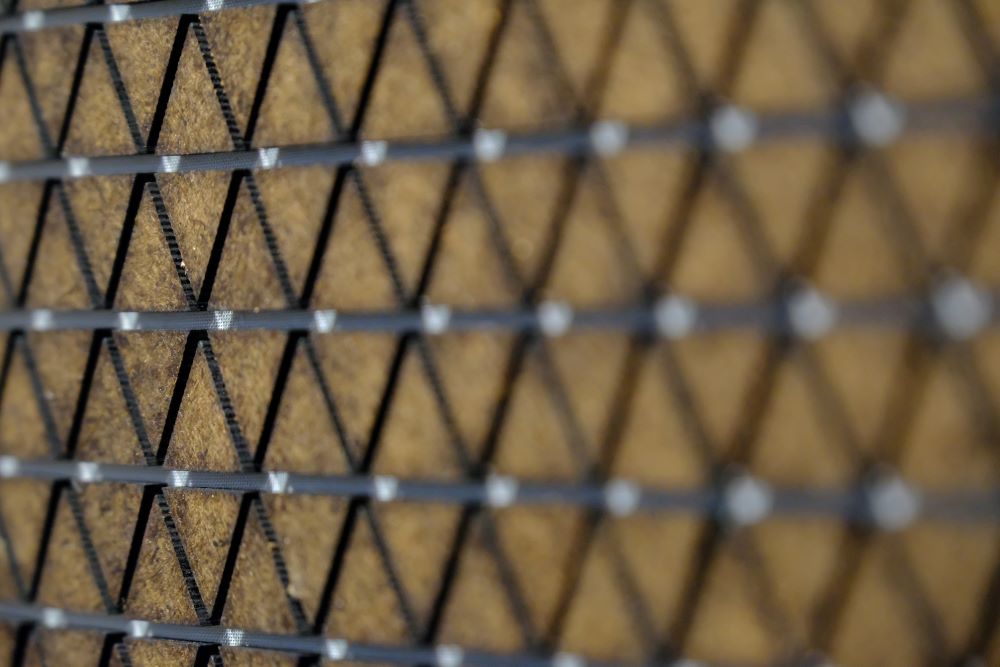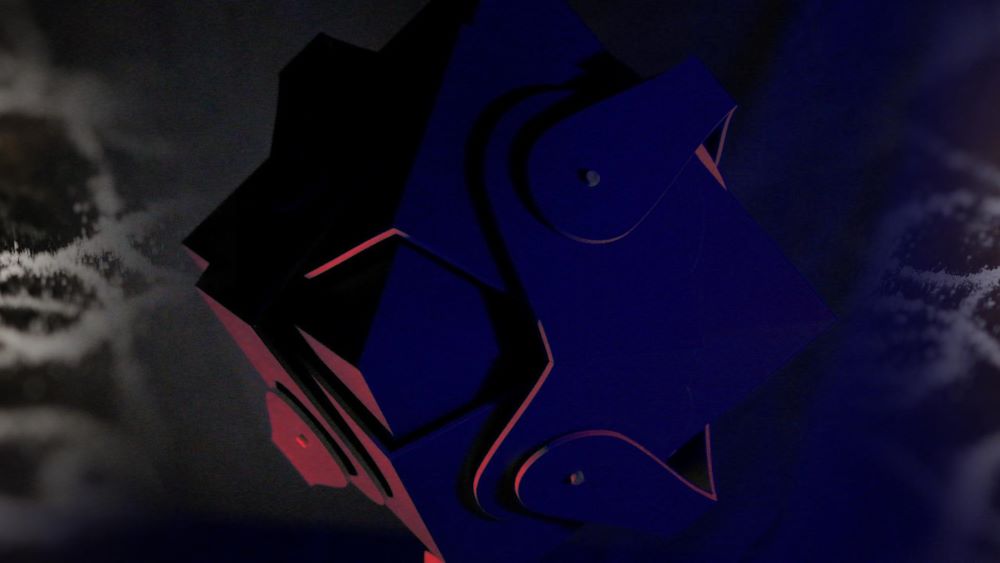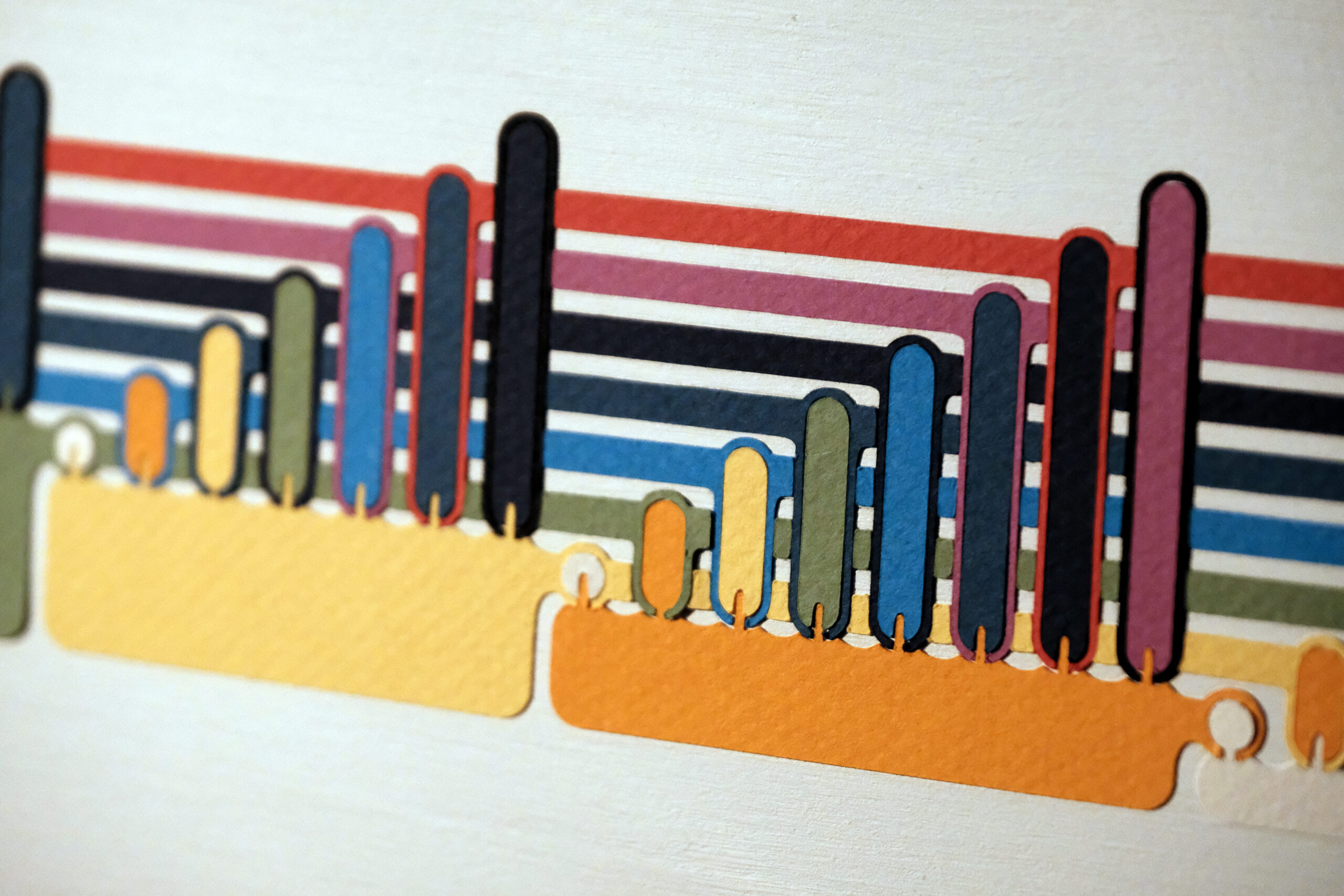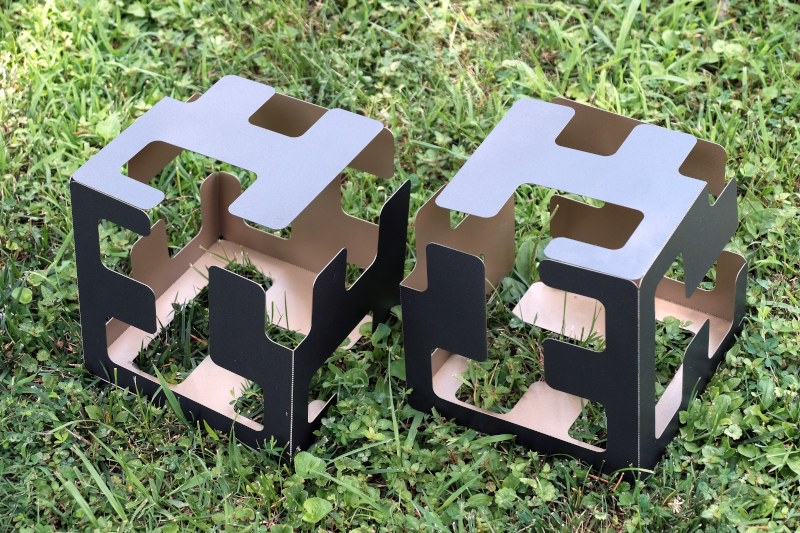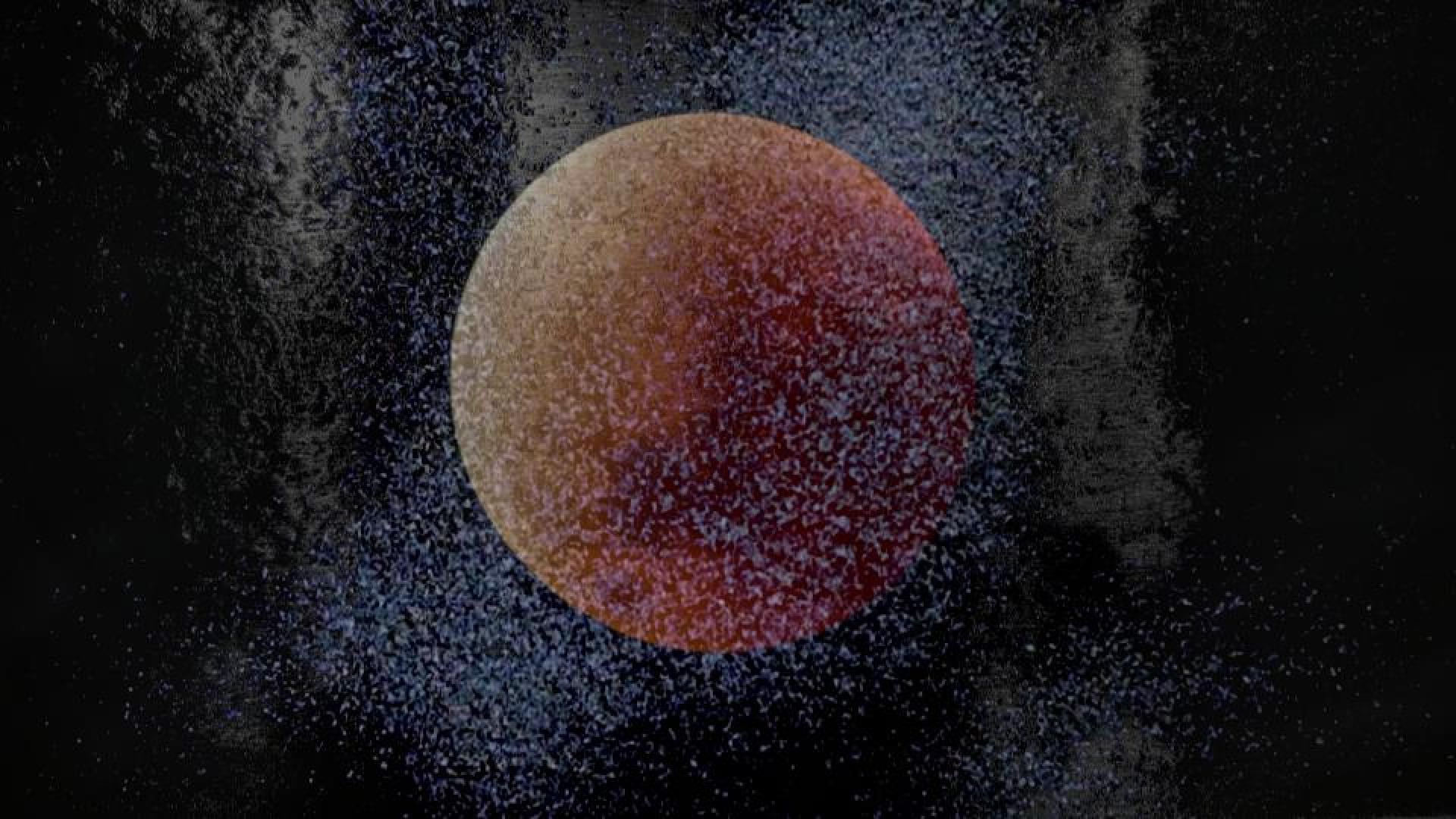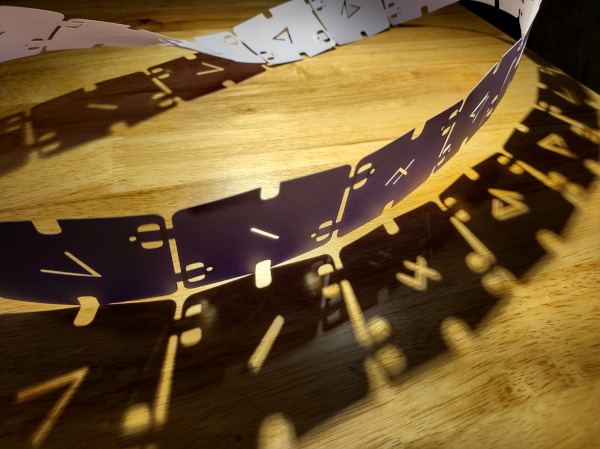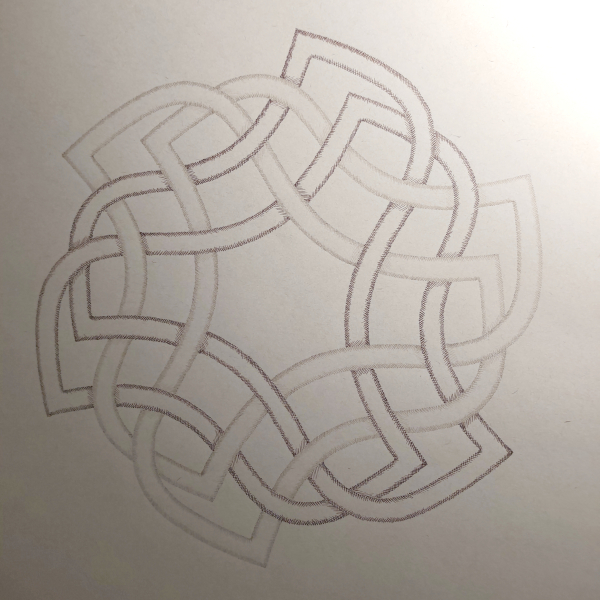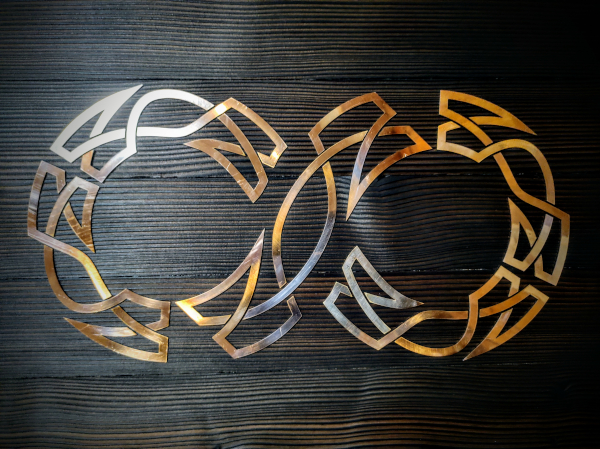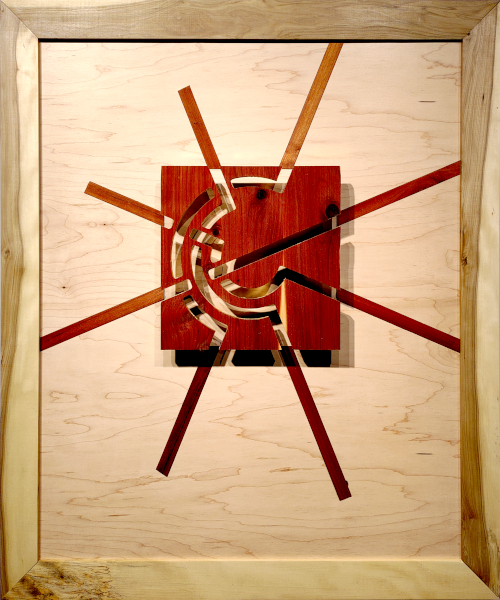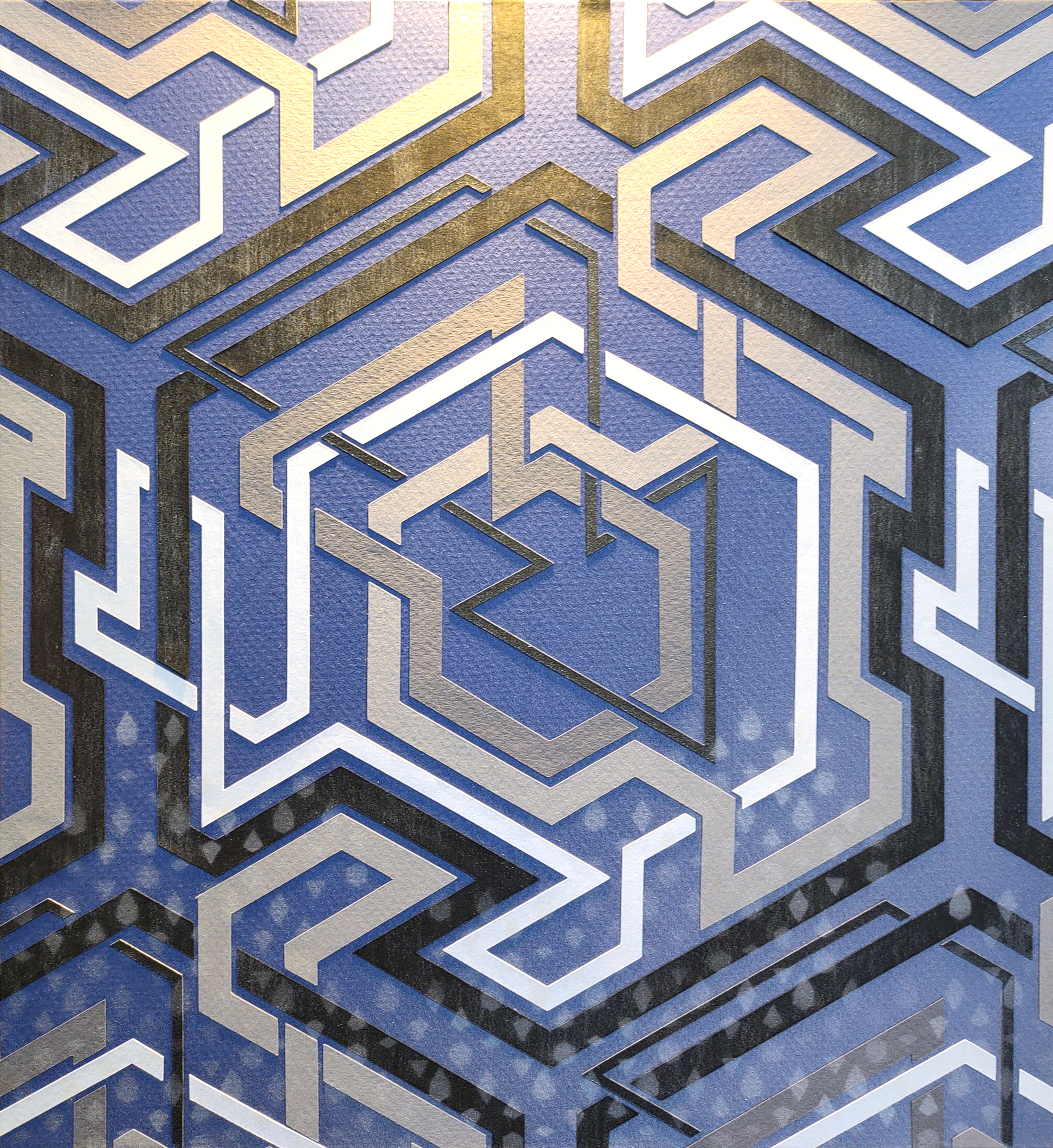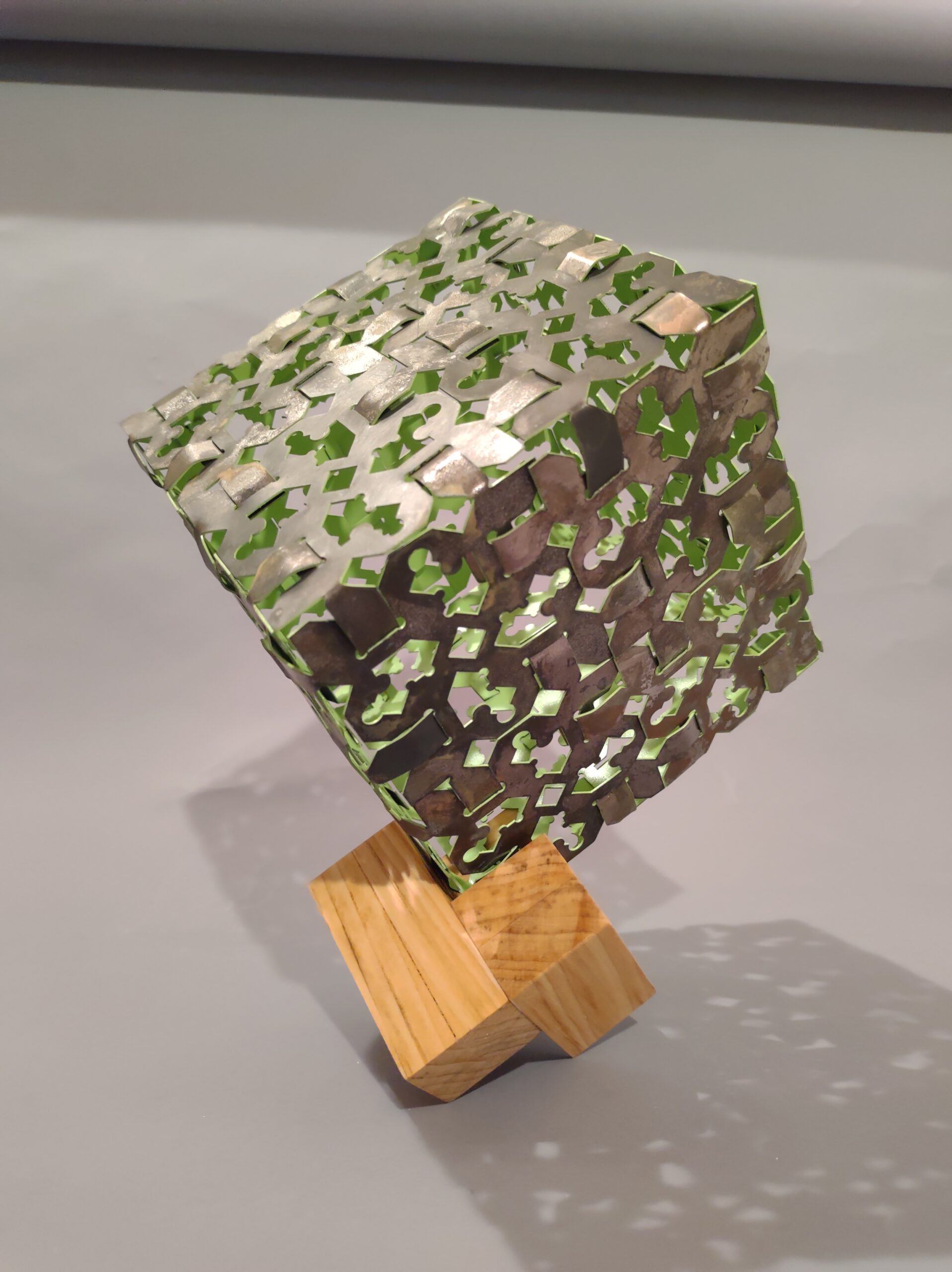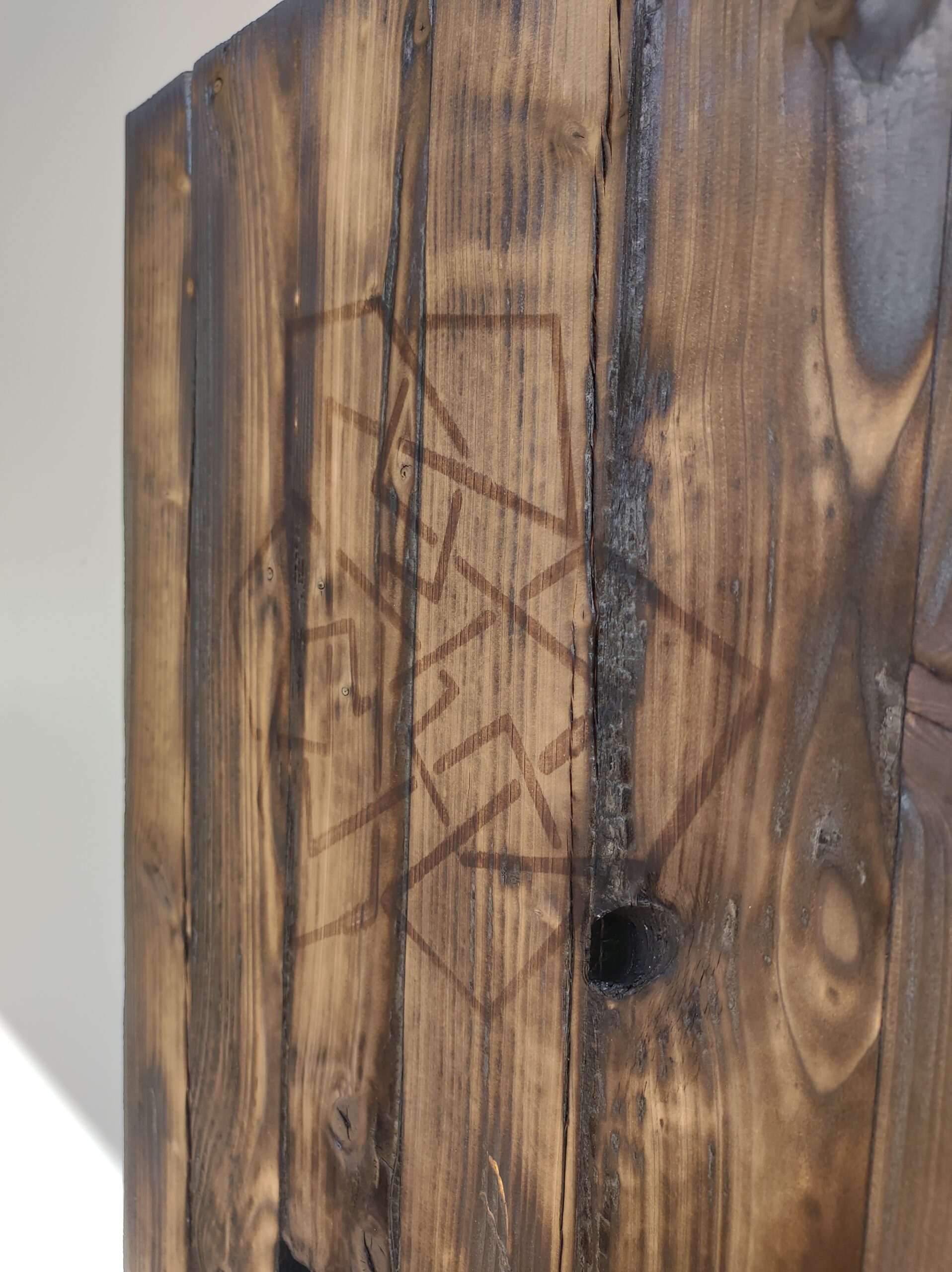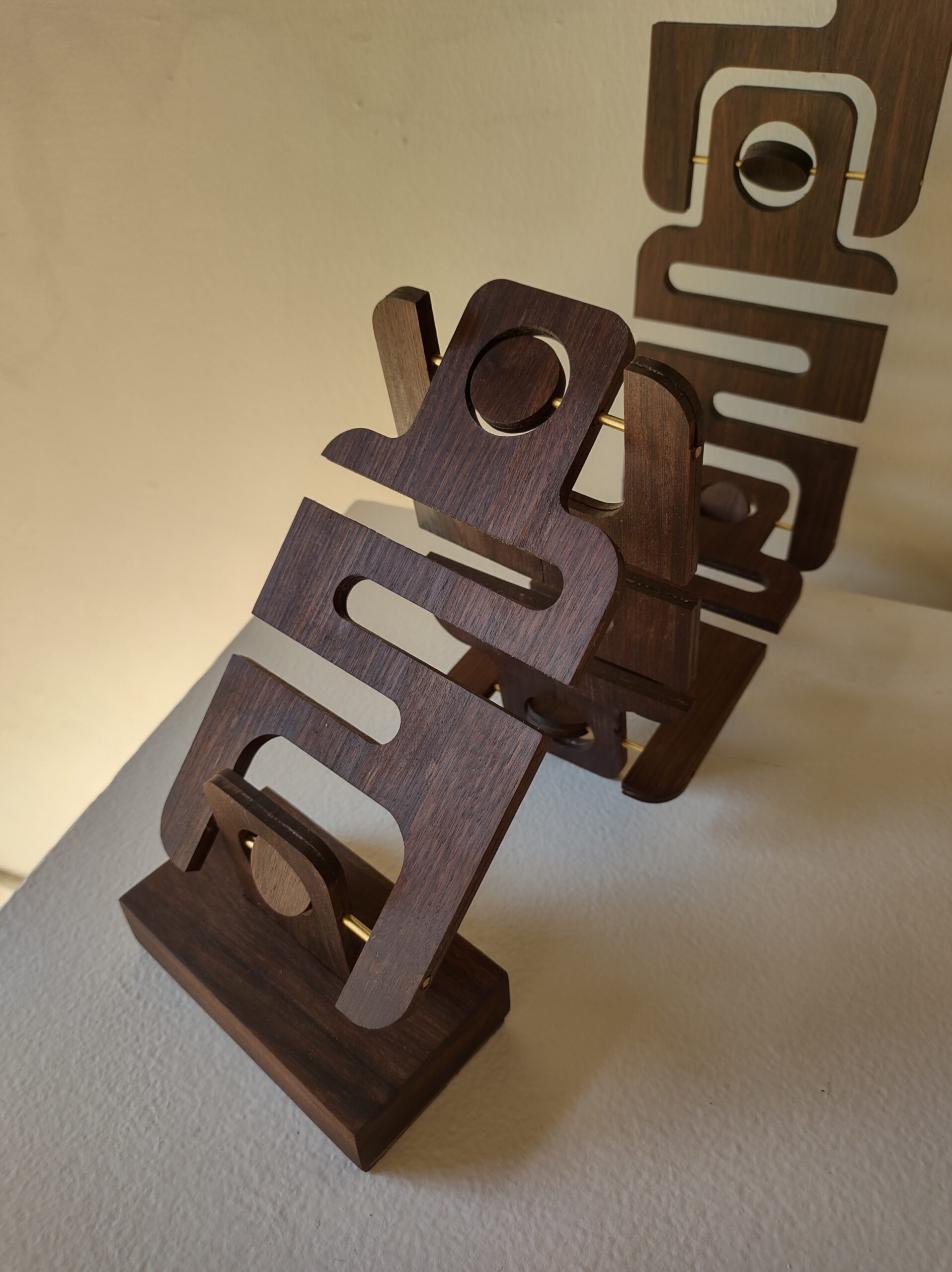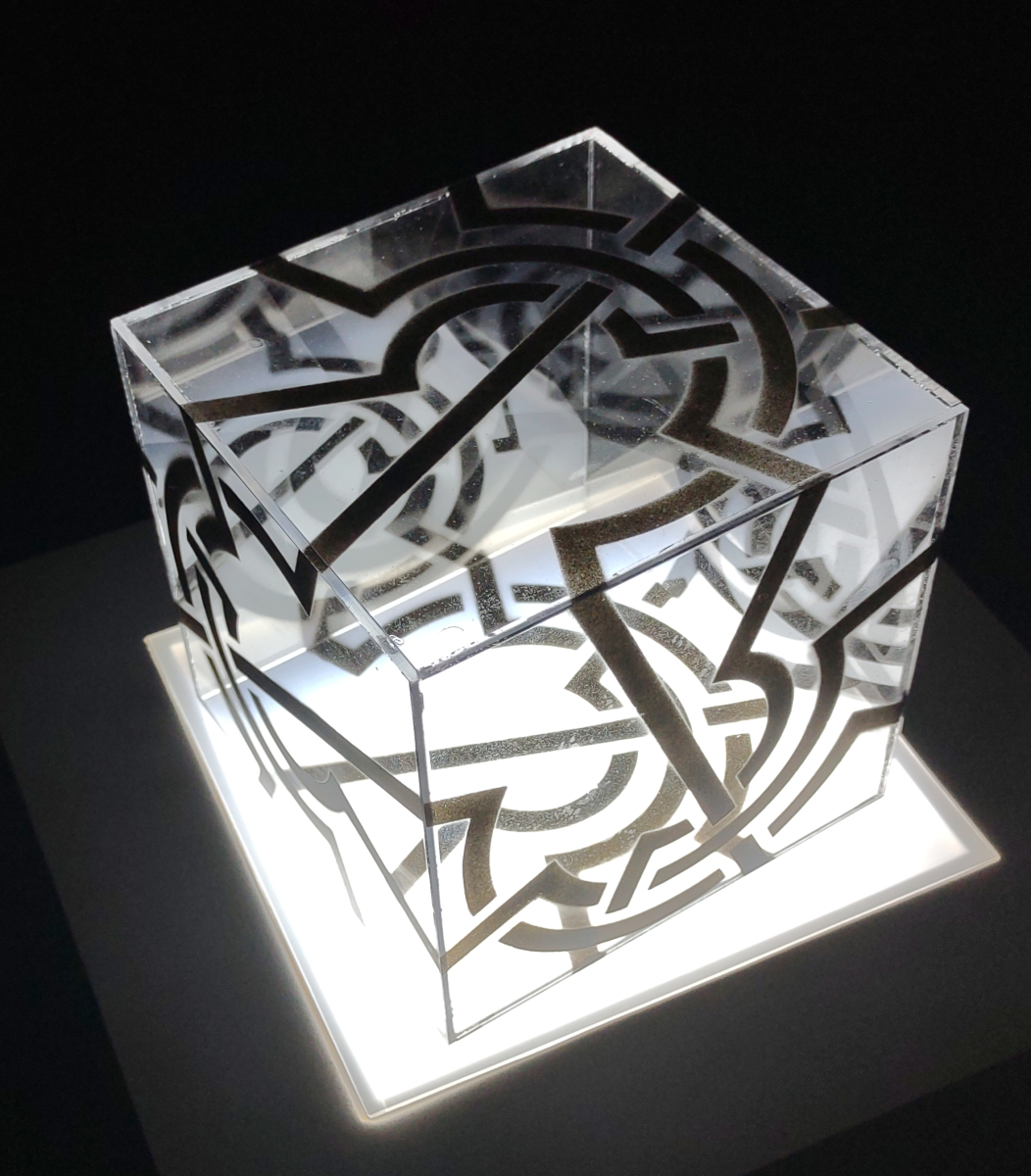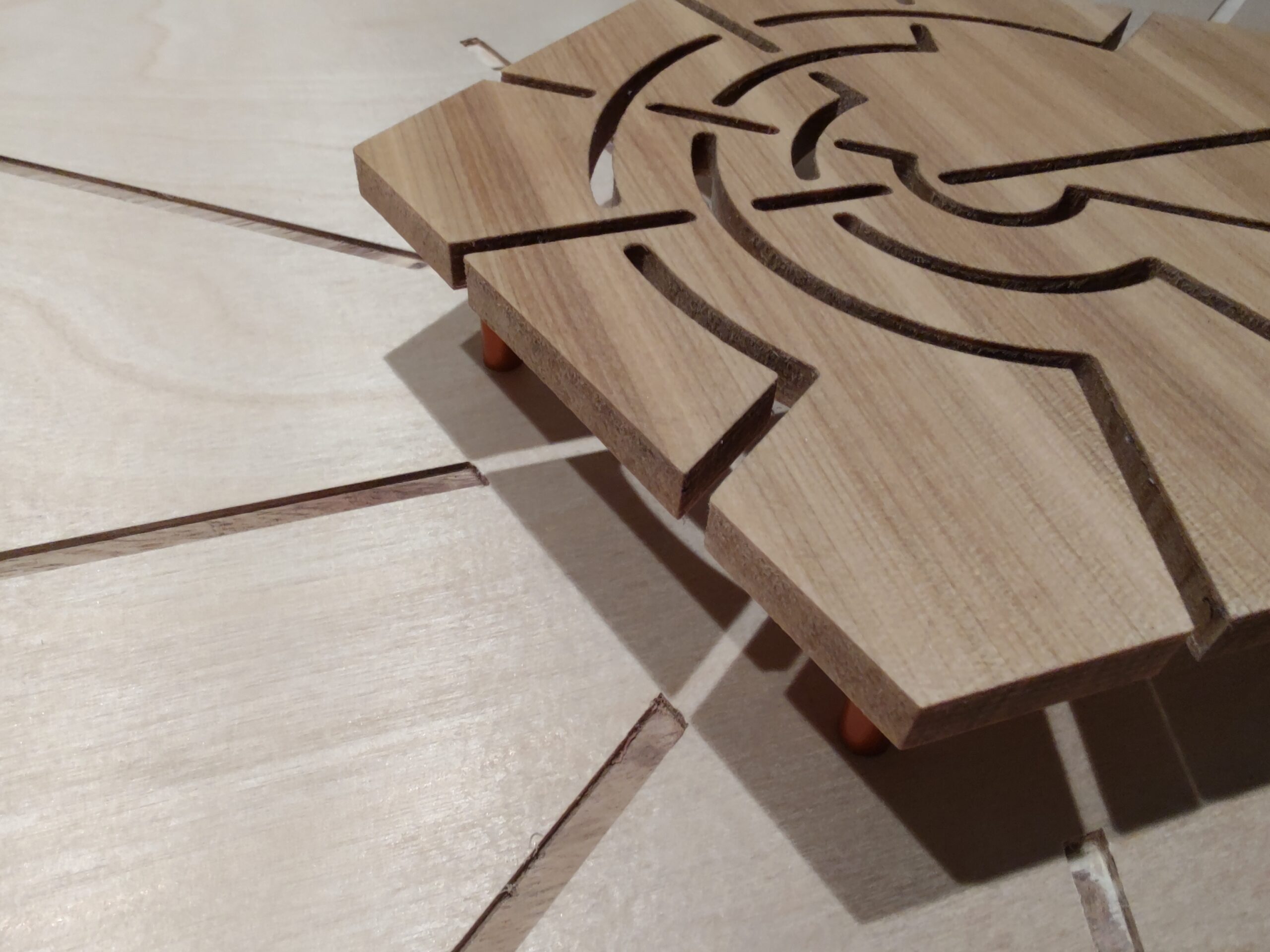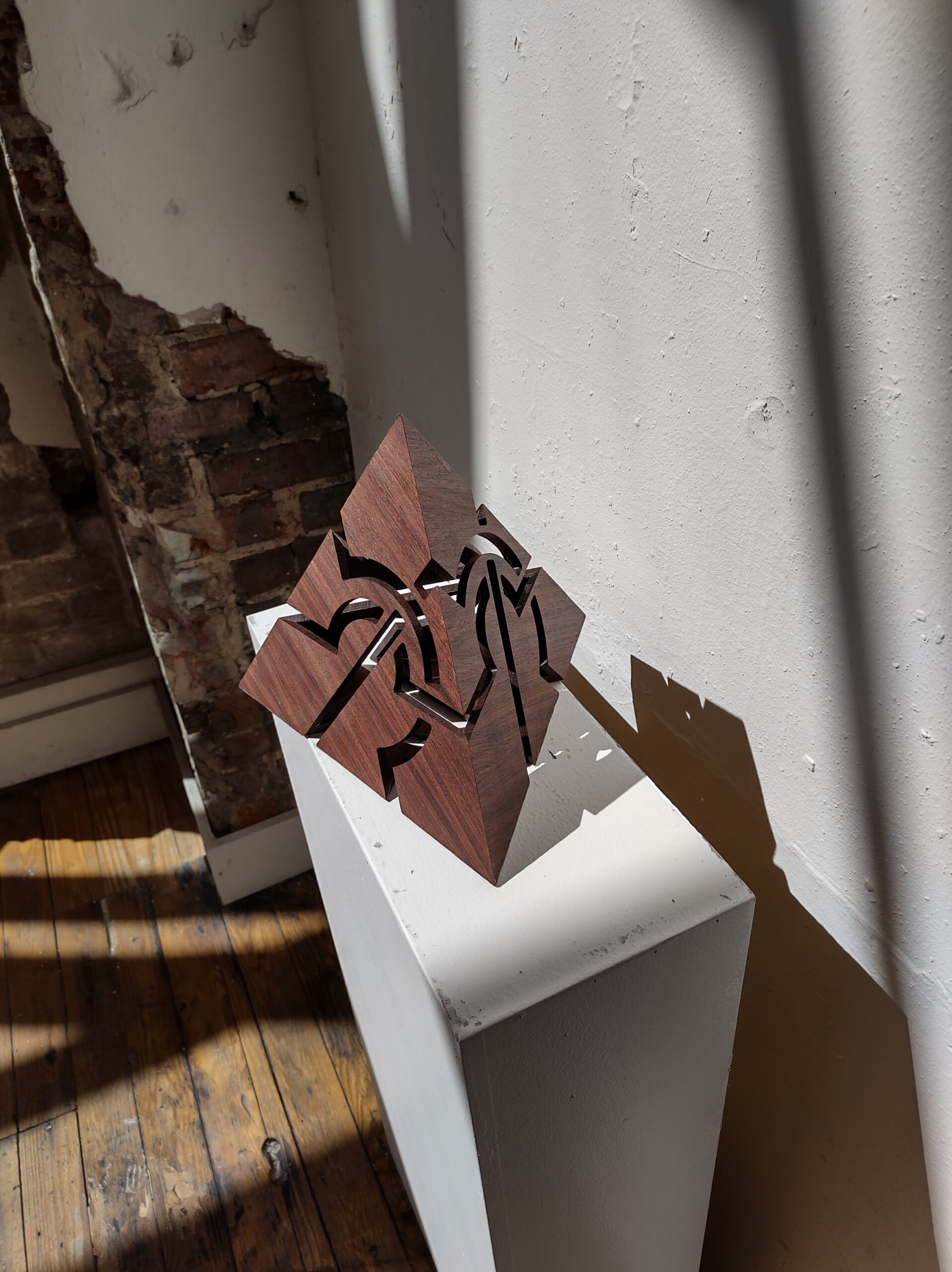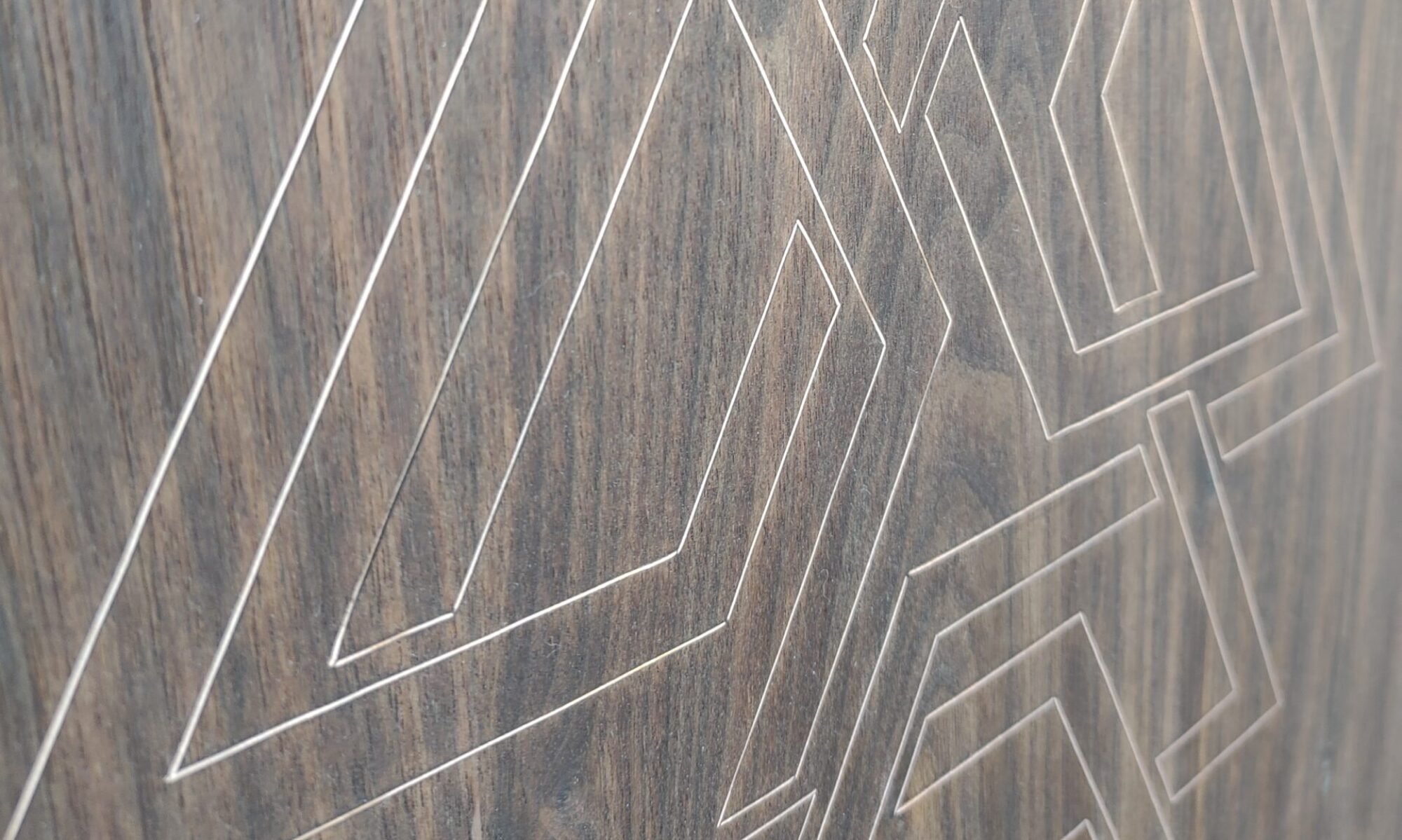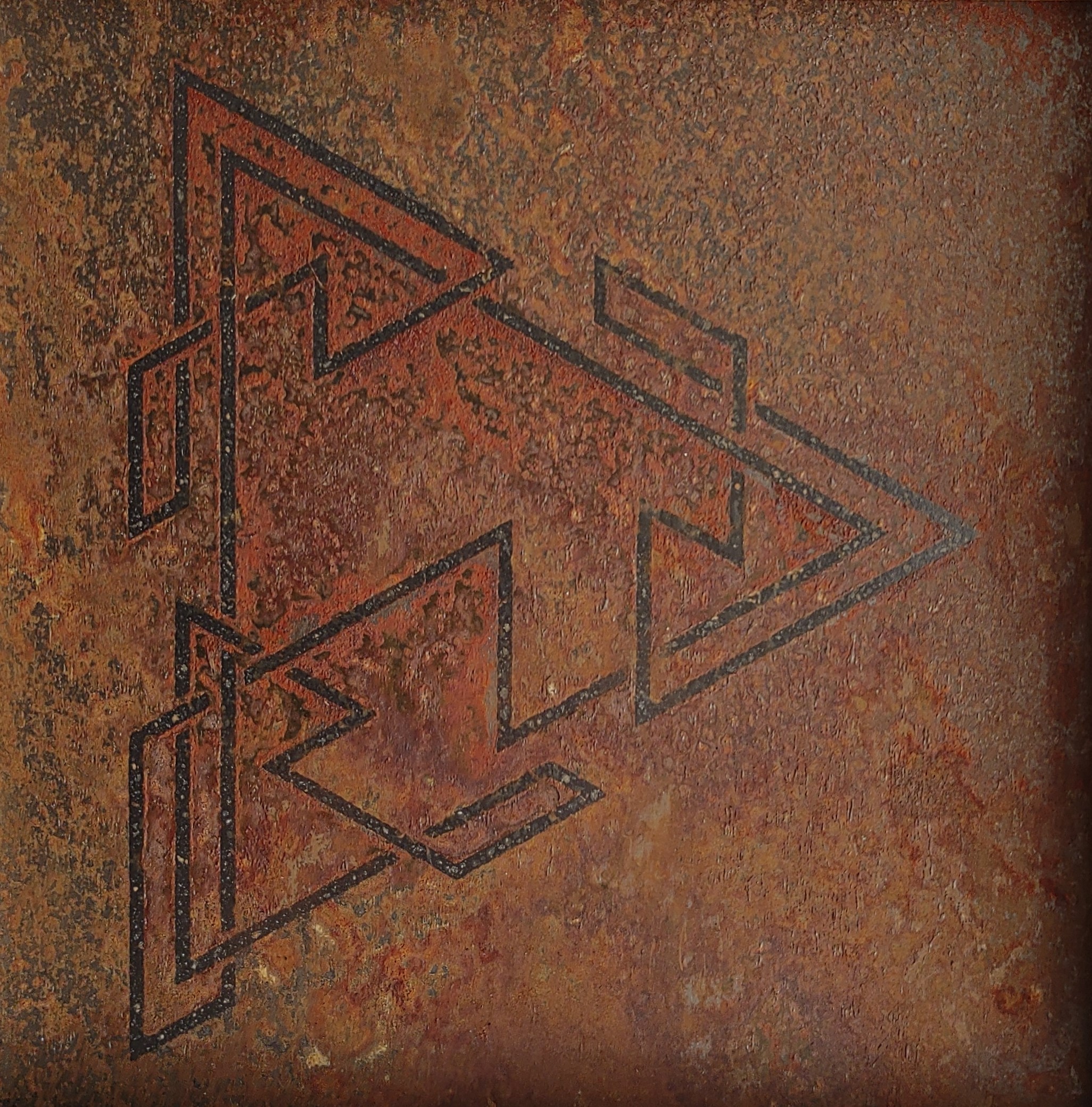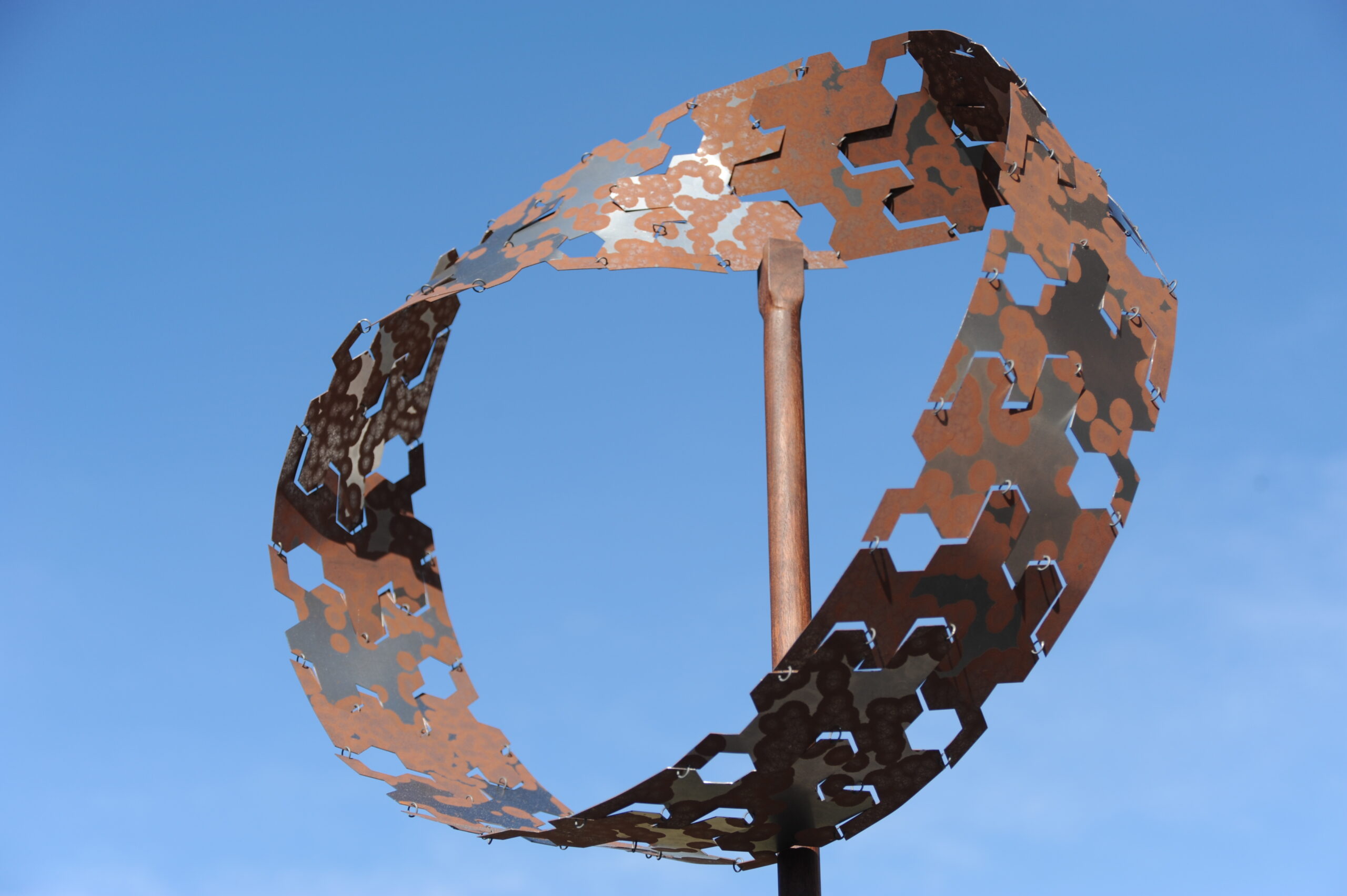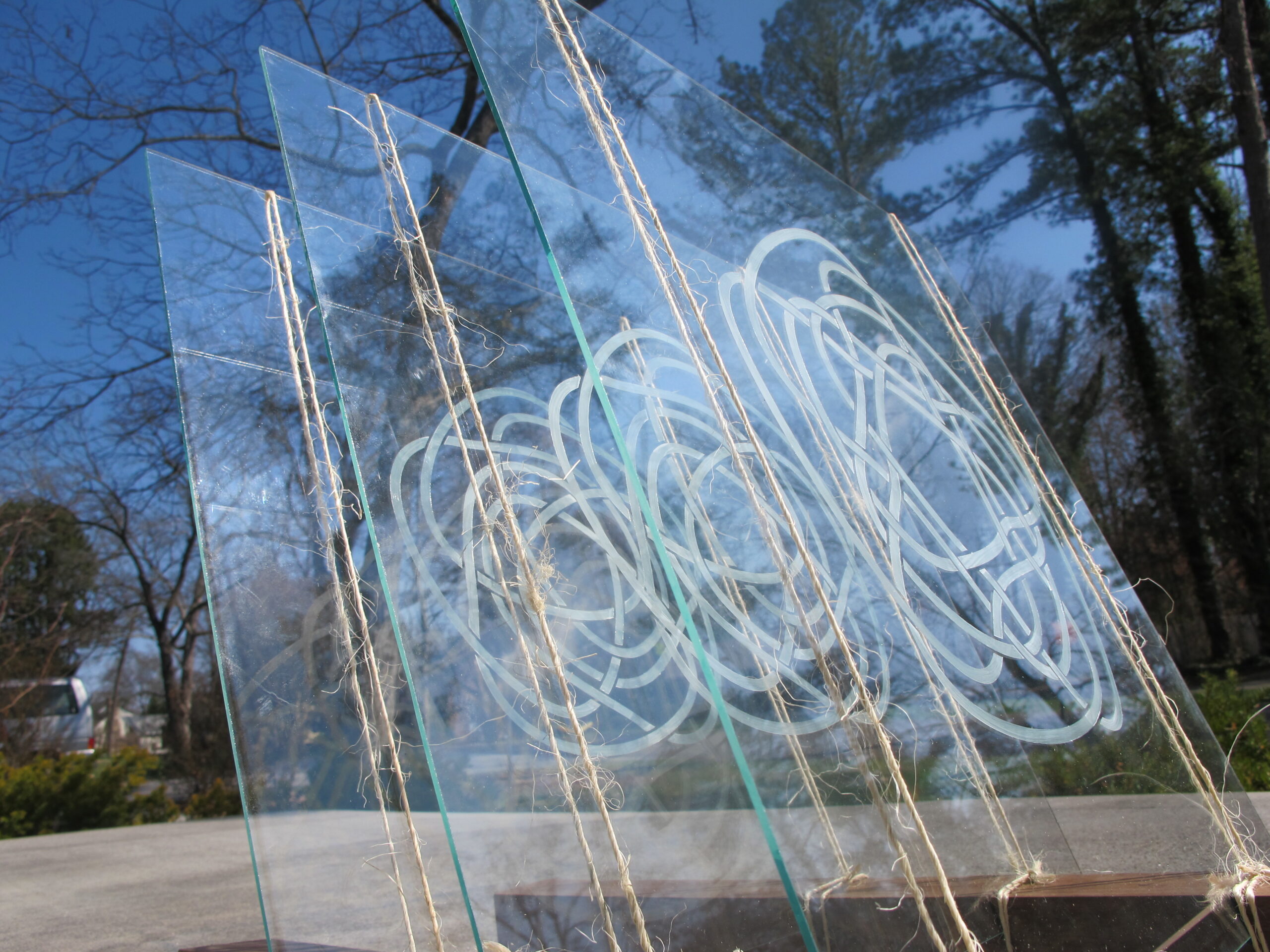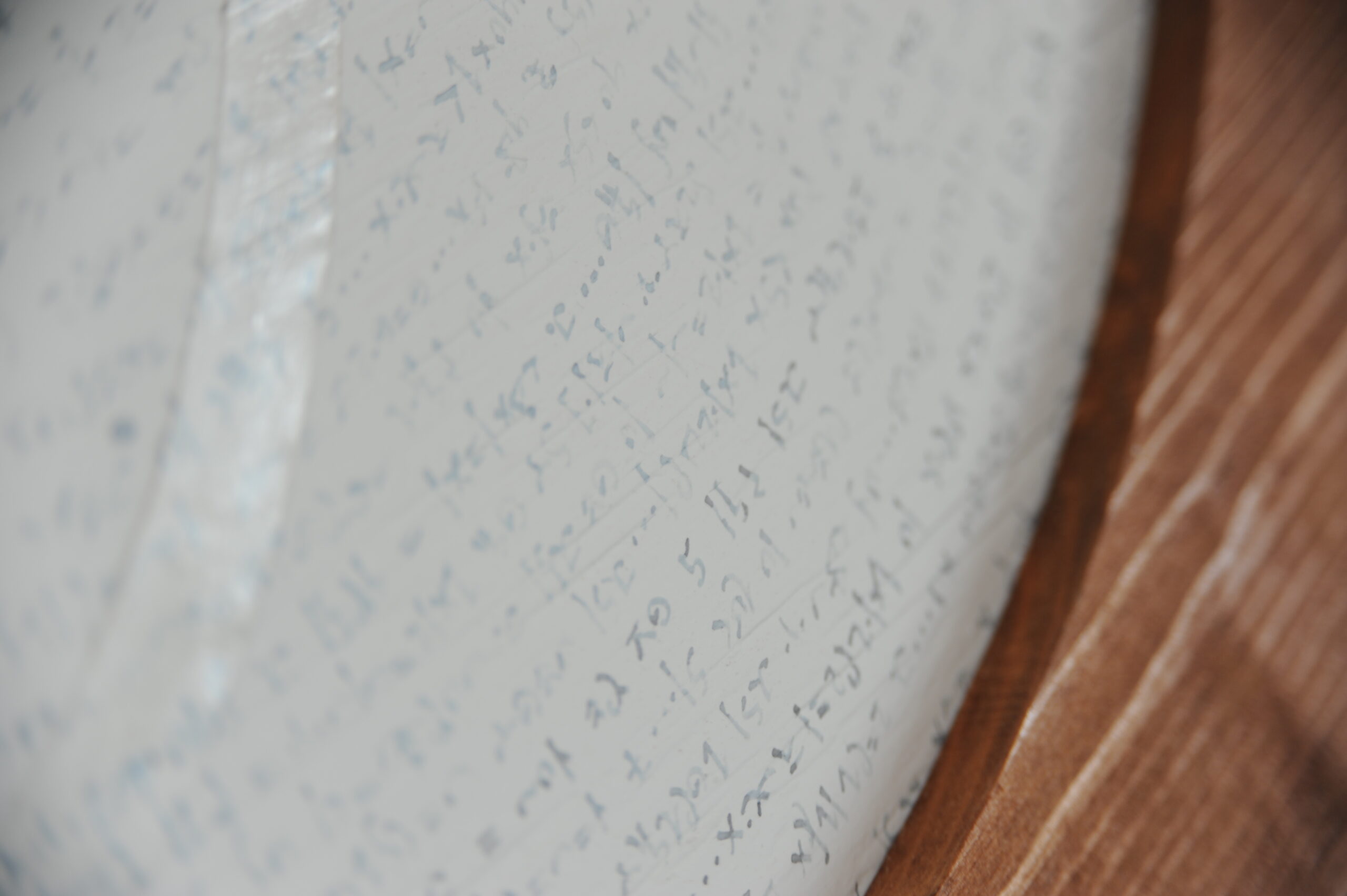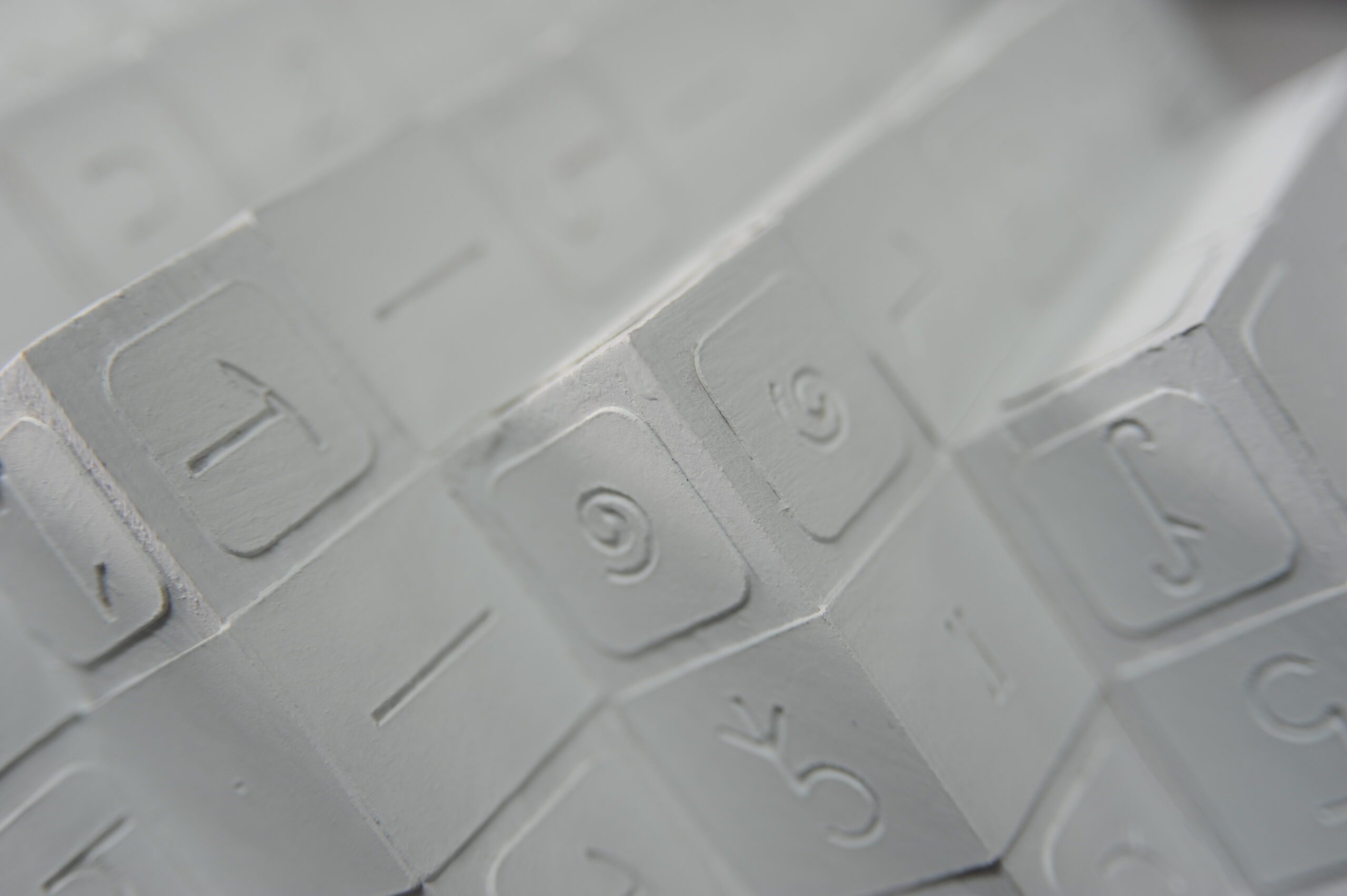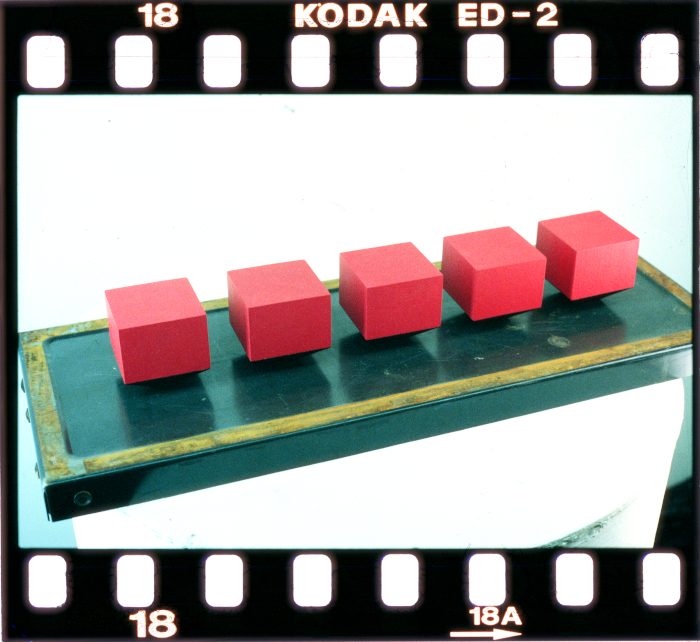Category: art
This is everything visual, with the most recent work displayed at the top. Each page has more information on the piece, project, or show.

rana viam artwork
There is a general math-related puzzle called the frog hop problem. I first heard about it from watching a Stand-up Maths video. What interested me most was trying to visualize the whole thing – to create a piece of art based off of a specific set of branching decisions. The artworks here all relate to…
film night at relay ridge june 6, 2024
Chaka Kahn thinks she is the mockingbird of babesNatalie McLaurin · @gnatawhatI made this when I was thinking a lot about taking up space as a woman. How male birds get the best end of things, they are the prettiest and the biggest/strongest. And I think Mockingbirds would really connect with Chaka’s song. Ground Work(from…
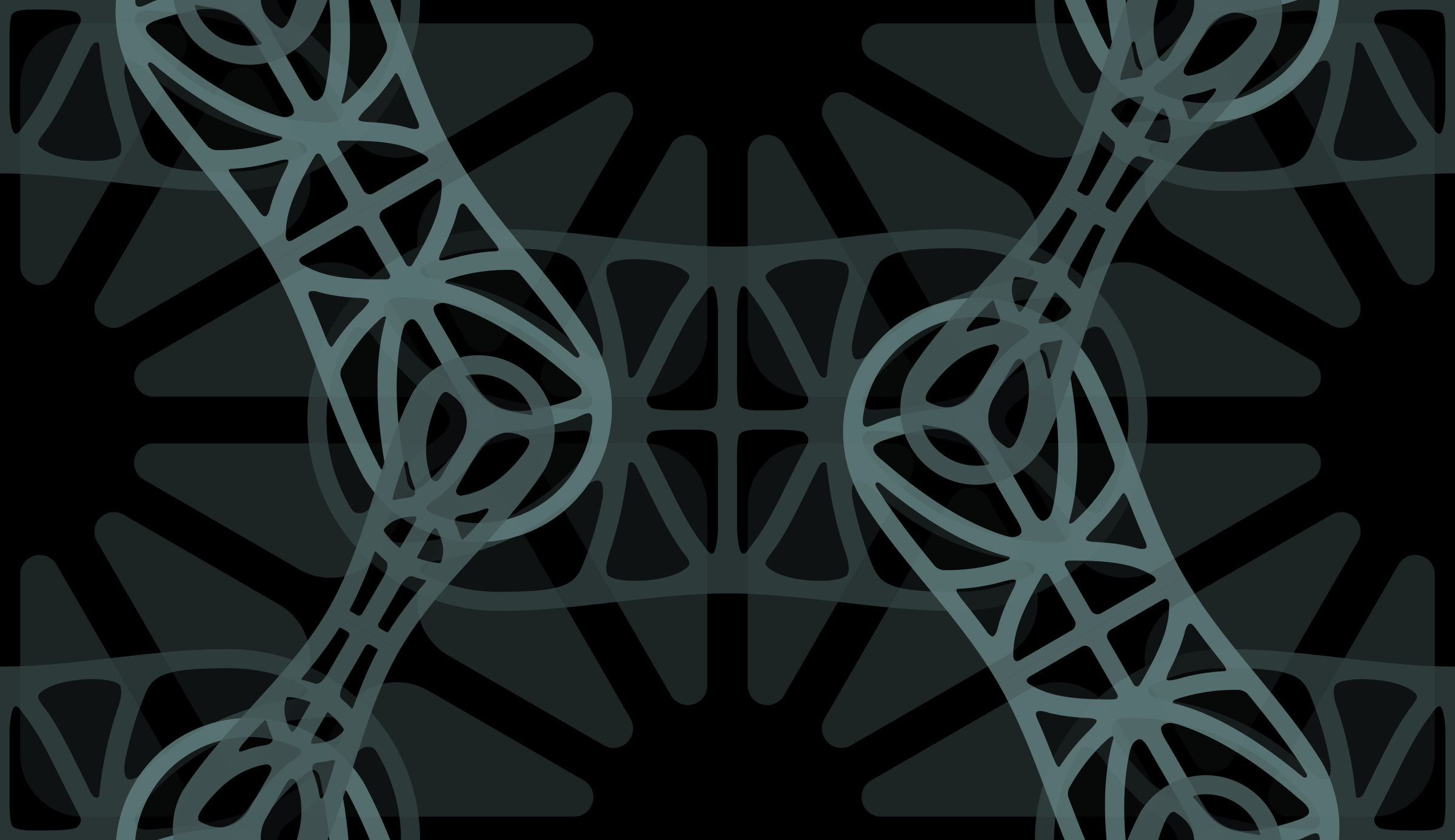
dead temple visions artifact lattice shirt
the official garment to accompany any Dead Temple Visions artifact
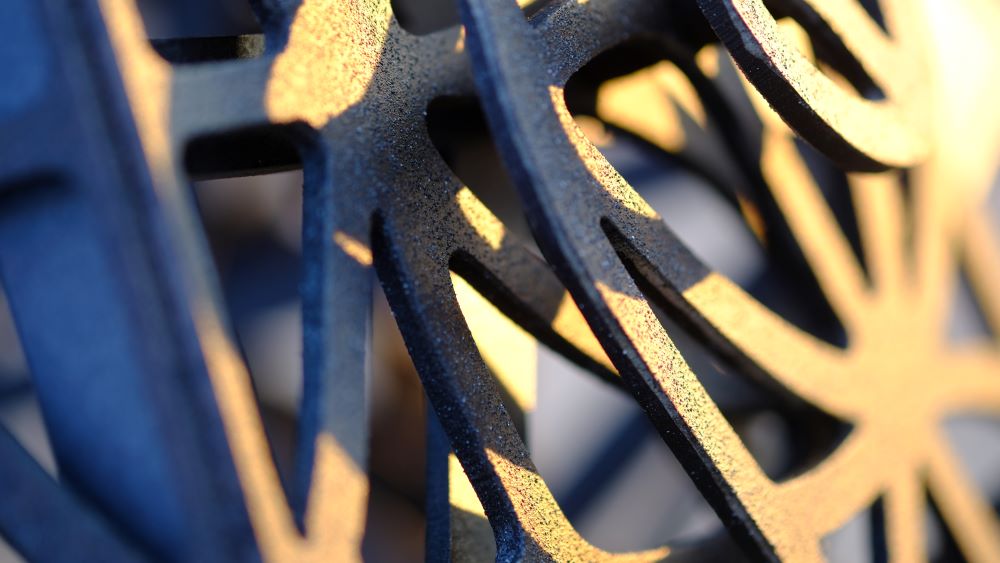
dead temple visions sculpture artifacts
a sculpture with several iterations, made for the Dead Temple Visions sound film

surface-tiling curves
semi-technical description and examples of a new way to use space-filling curves
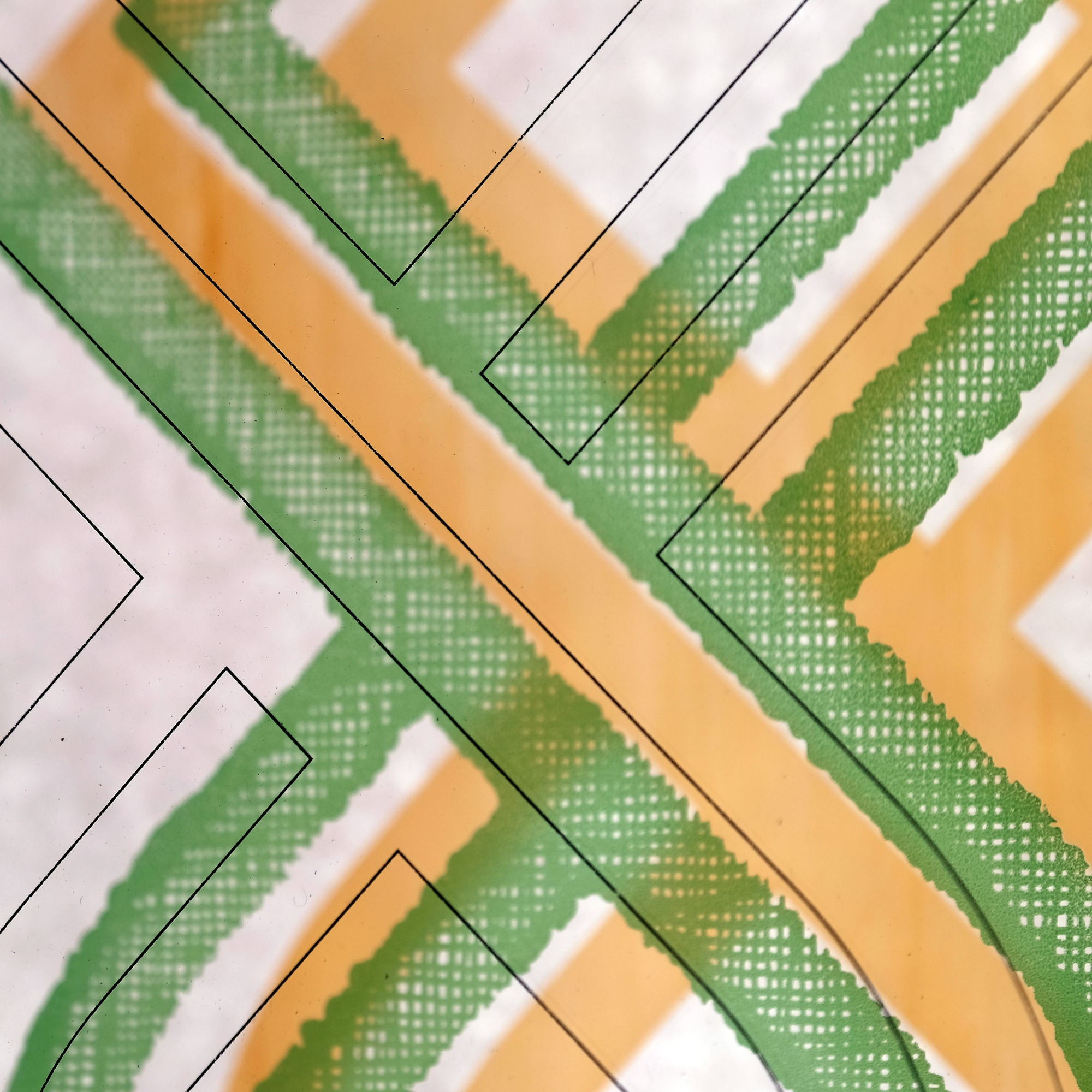
negative single twist component (deconstructed print)
a site-specific, multilayered print based off of other artwork

knot theories iii
Geometric and abstractive works in metal sculpture, painting, woodworking, papercraft and other media illustrate basic principles of topology and tiling.
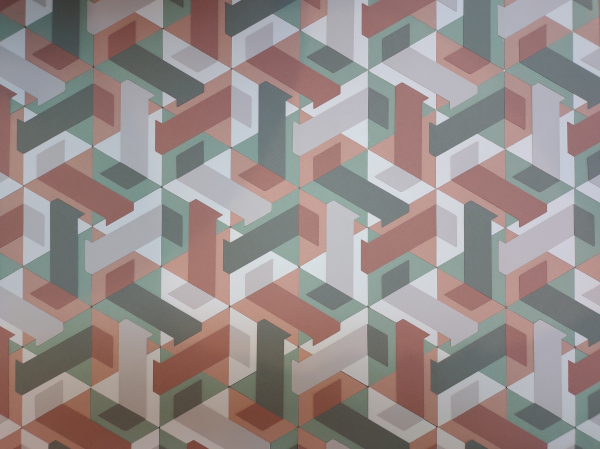
axonometric tiles
Lattices of three different colors intersect over a field of triangles. The large hexagon contains the basic unit for the pattern, made up of transformed copies.
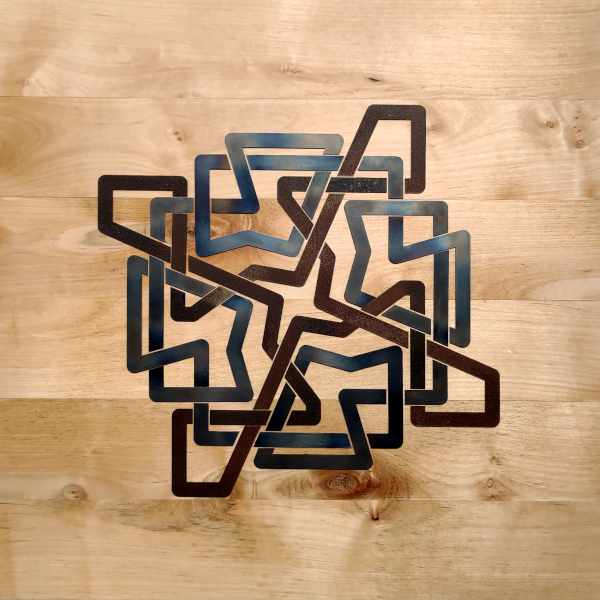
double quad knot
Two knots based on 90° radial symmetry intertwine. The same material (steel) is heat treated with different processes to create two different colors.

negative single twist components
A helix and a hexahedron are both composed from a single component, a negative single twist knot.
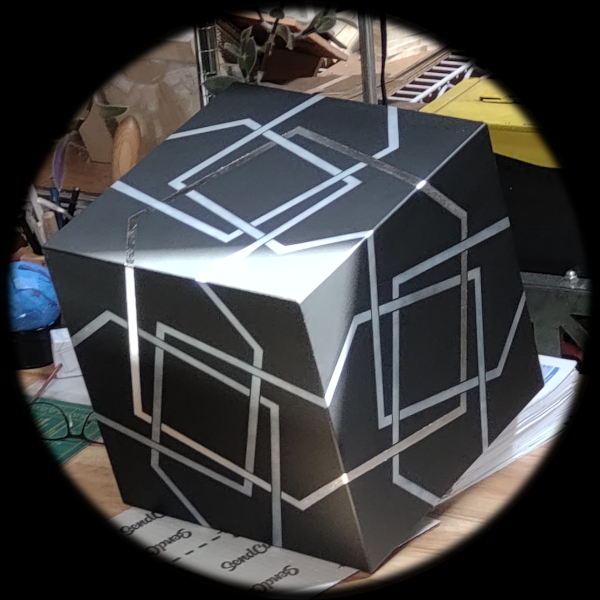
perspective hex
Eight knotted hexagons cover the surface of a cube in a pattern which is identical on each face of the solid.

branching unknot
Two unknots are arranged vertically above a charred wood base. The shape of the metal makes self-supporting convex and concave arrangements possible.

woven tile hexahedron
Copies of a single metal tile are woven together to form a cube with a concave vertex.
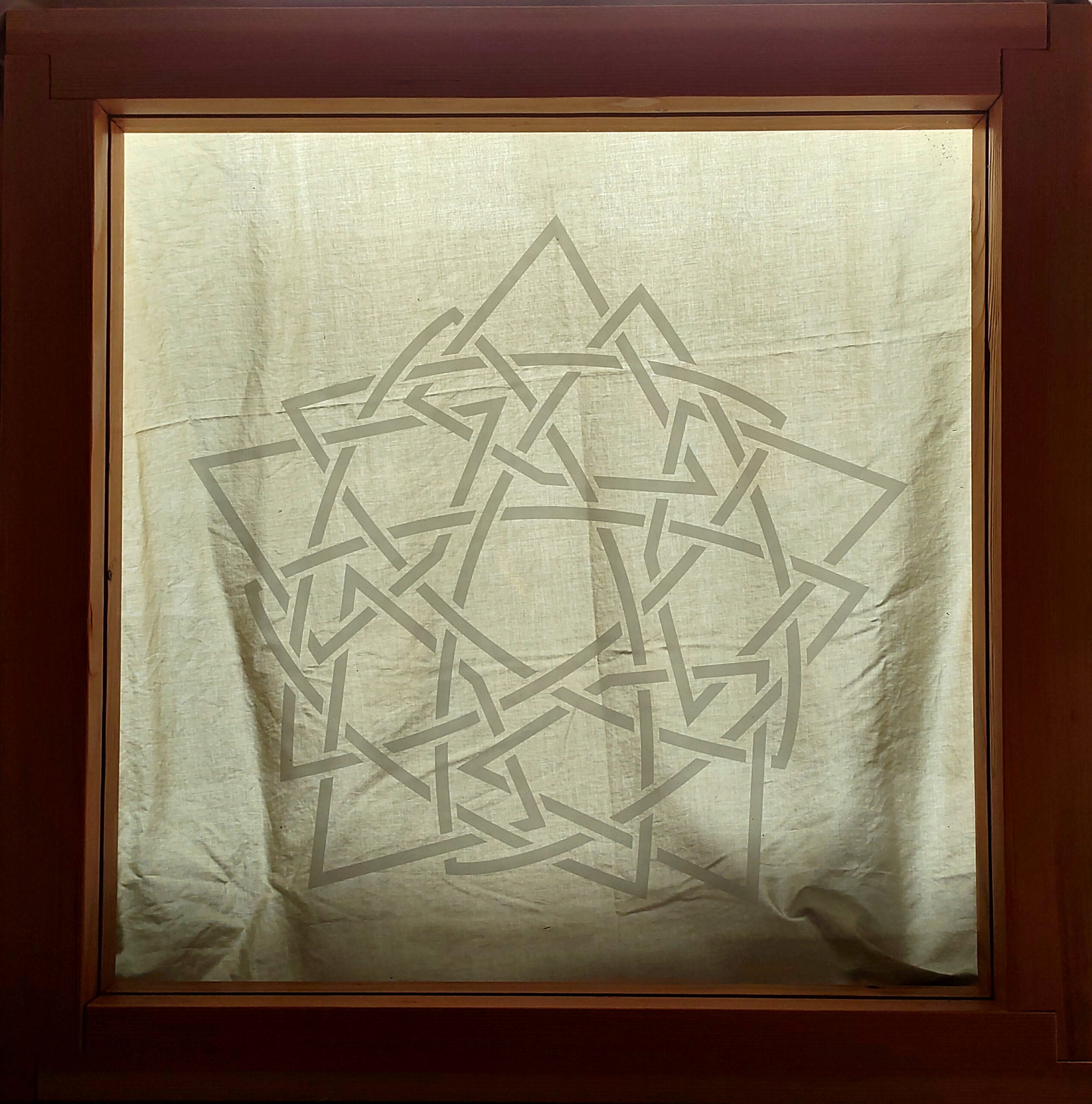
penta angle swirl
A unicursal decagonal star intersects five chained quadrilaterals. The chain gives the impression of a five-pointed star.

isometric hex knot
Outlined knot segments are inlaid with copper wire. Each segment follows a path which eventually returns to its origin.
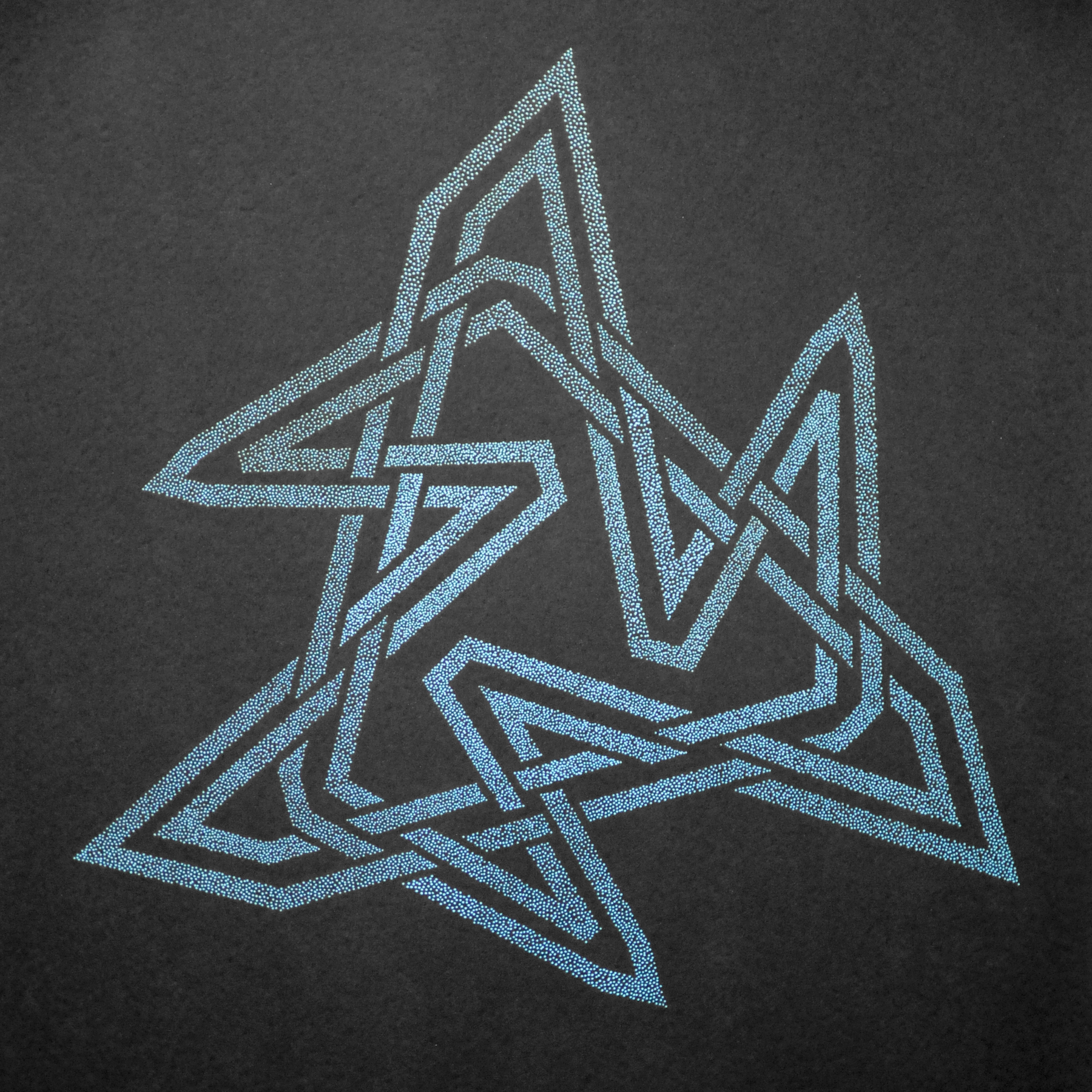
unicursal polygonal tercet
Stippled paint creates a unicursal knot design. The aggregation of dots suggests straight lines not present in the artwork. This single component is connected end to end with two rotated copies to create the knot. Doubling the individual segments of the knot design does not disrupt the over / under pattern that knot diagrams have.
artist statement
Motivation / Goals Identifying a challenge For me, making a new artwork begins with a question I don’t immediately know the answer to. It ends with the artwork as the proof that the answer I came up with is true. The middle part, figuring it out, is often more time consuming than shaping the actual…
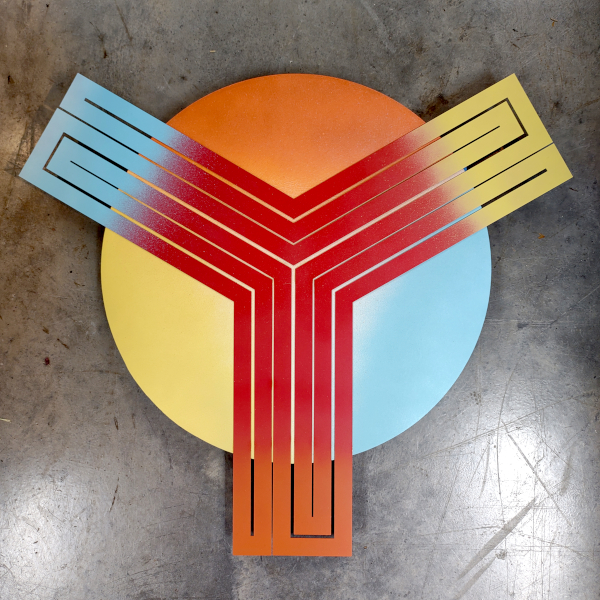
tri unknot
A line broken by an inner negative space rotates to form an unknot, a continuous line with no overlapping. The component used as the basis for this piece, as well as the resulting structure, can be unraveled to form a loop. Tri Unknot was on display at the McGhee Tyson Airport (TYS) in 2023.

tri unicursal knot
A unicursal line is inlaid in copper on the face of a hollow truncated tetrahedron. The knot creates a cognitive visual illusion of three shapes versus two. The illusion that there are sort of 3 shapes but only really 1 is something I like about this one.
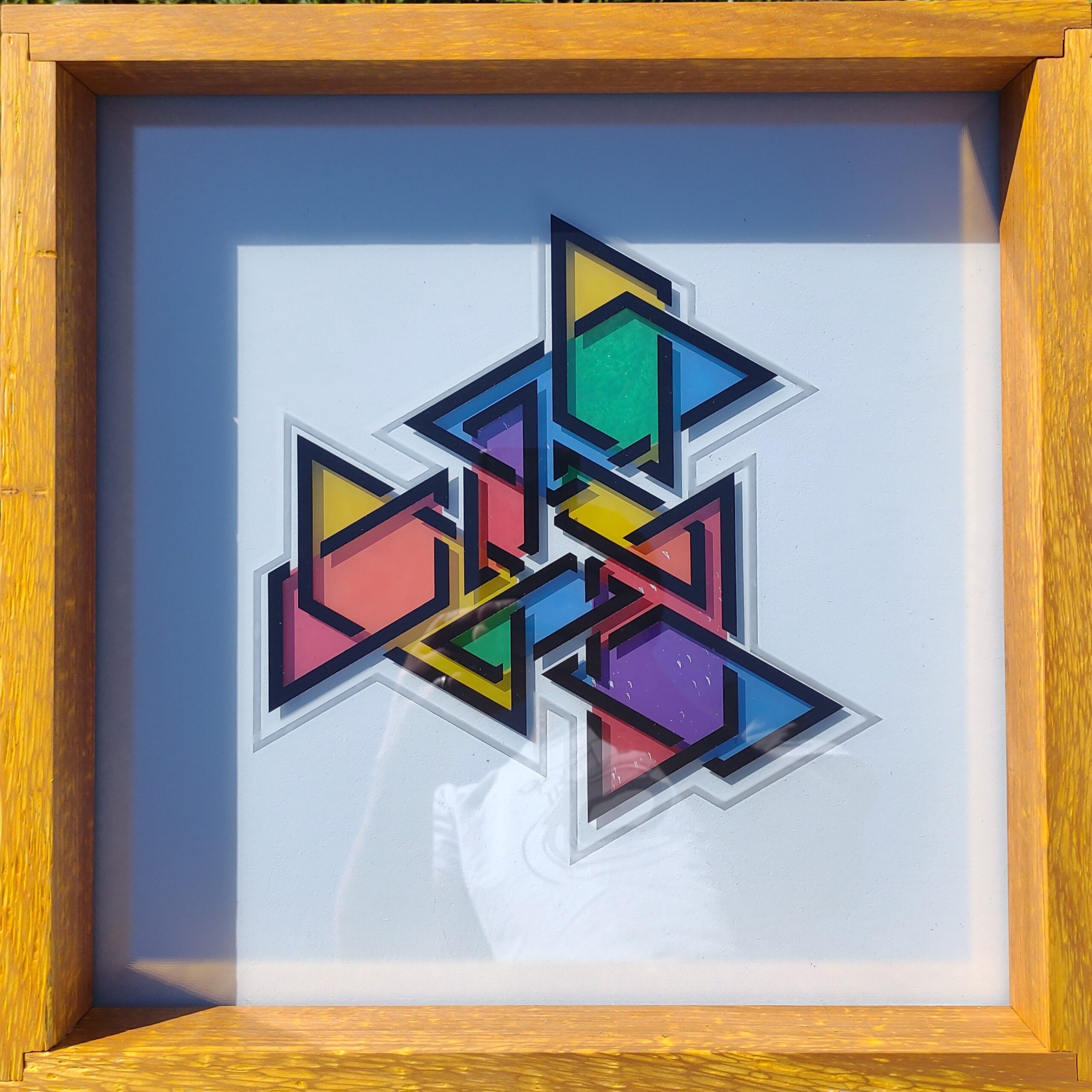
layered multi polygon knot
A group of three similar polygons rotate to form a knot. Multiple glass layers show colors, the knot itself, and a faint outline.
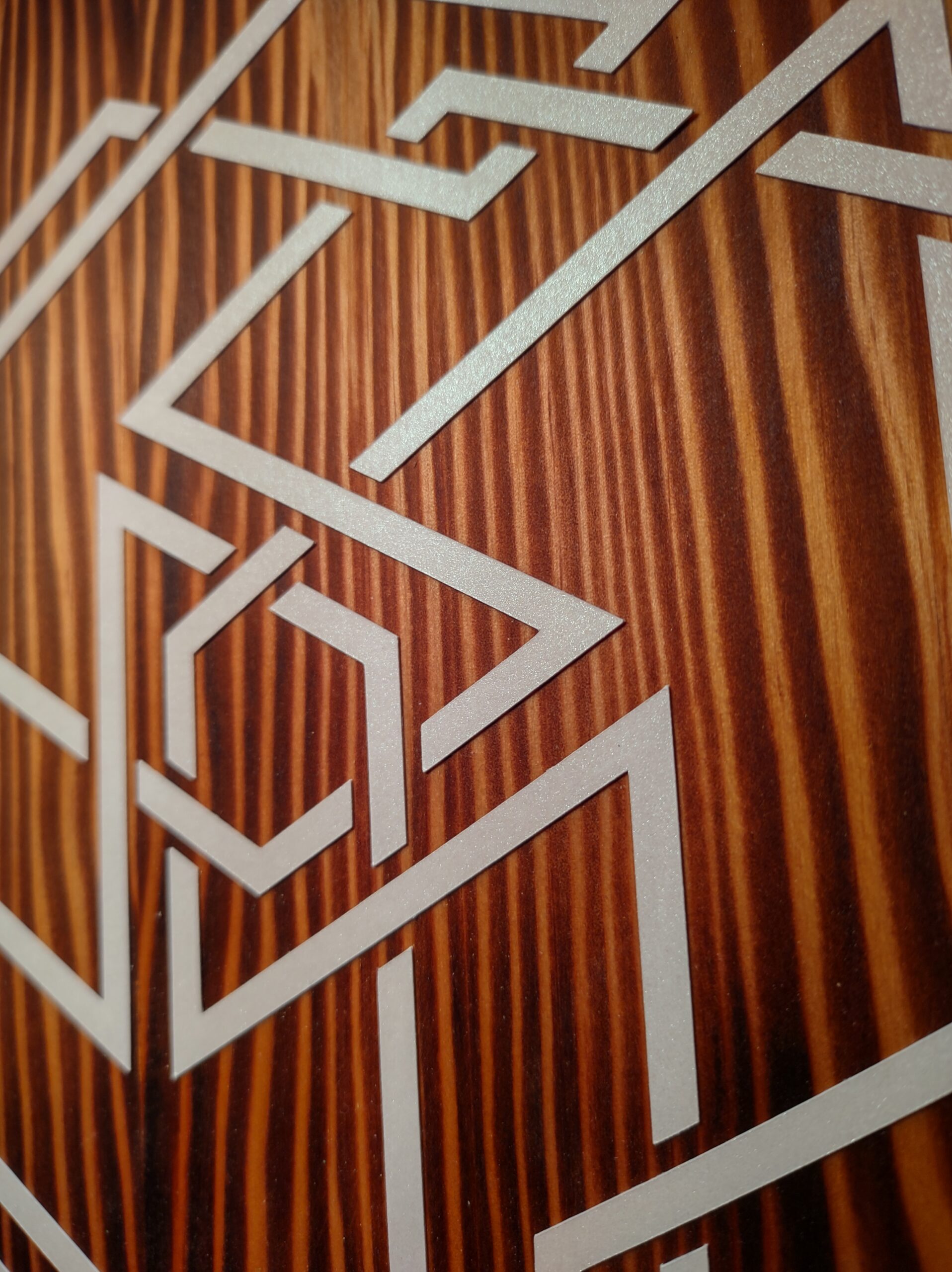
unicursal hex knot
A self-intersecting line rotates to create a hexagonal shape. The line can be followed from any point all the way around to loop back to its beginning. This was another experiment involving cut paper on charred wood. My first attempt at realizing this design was with wire in encaustic medium, shown here. Even though it…

tri angle polygonal knot
A parallelogram and a triangular line rotate to create an overall triangular shape.

lattice tile
One component of an interlocking tile extends its connectors and uses color variations to imply depth and an isometric perspective. Stained veneer is inlaid in a wood background. This piece involves a bit of experimentation with an isometric knot. The interlocking square shapes require more than one color to give the effect that they are…
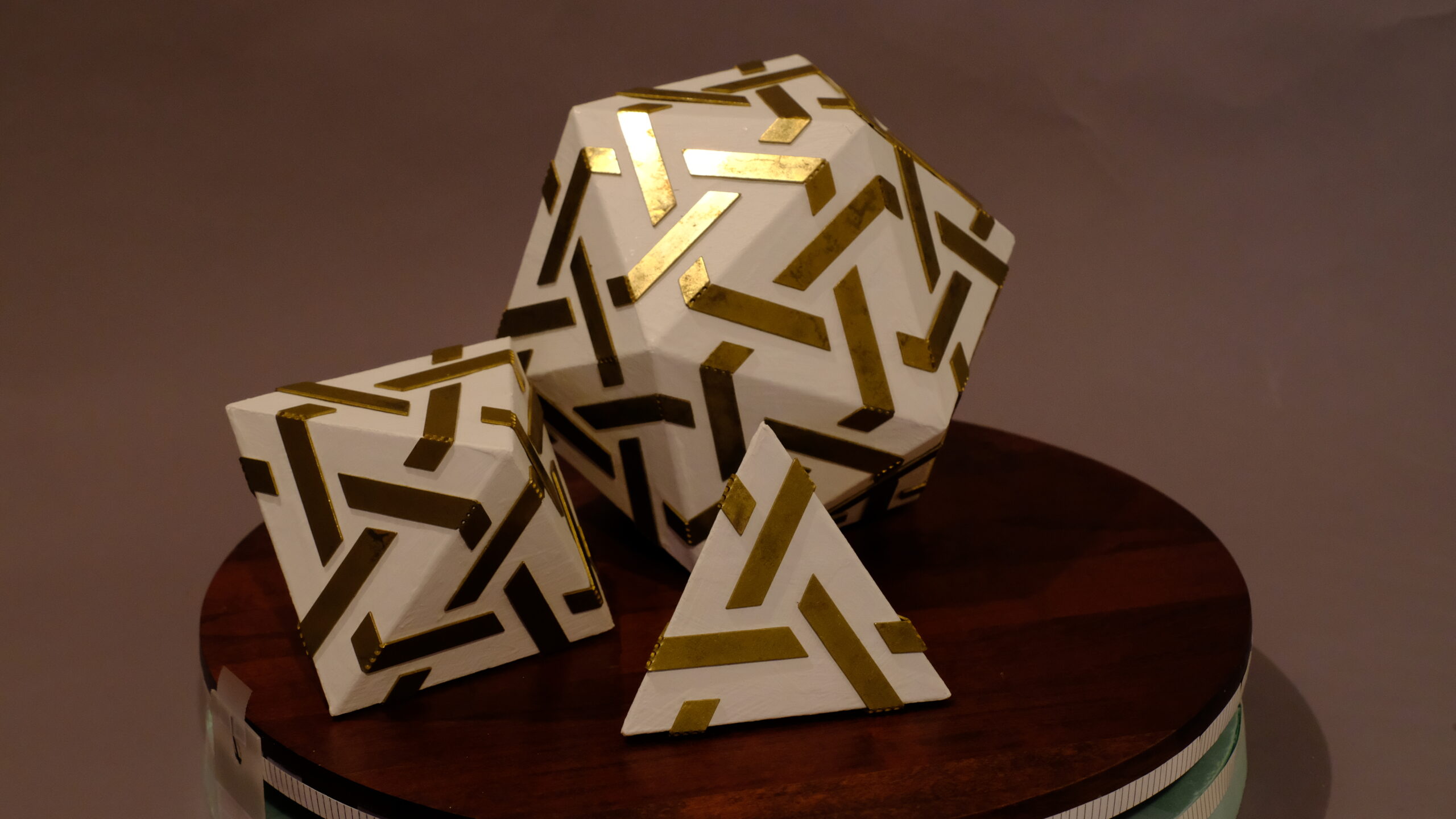
knot tiling triangle-faced polyhedra
A single shape tiles the faces of all three equilateral triangle-faced regular polyhedra with knots.
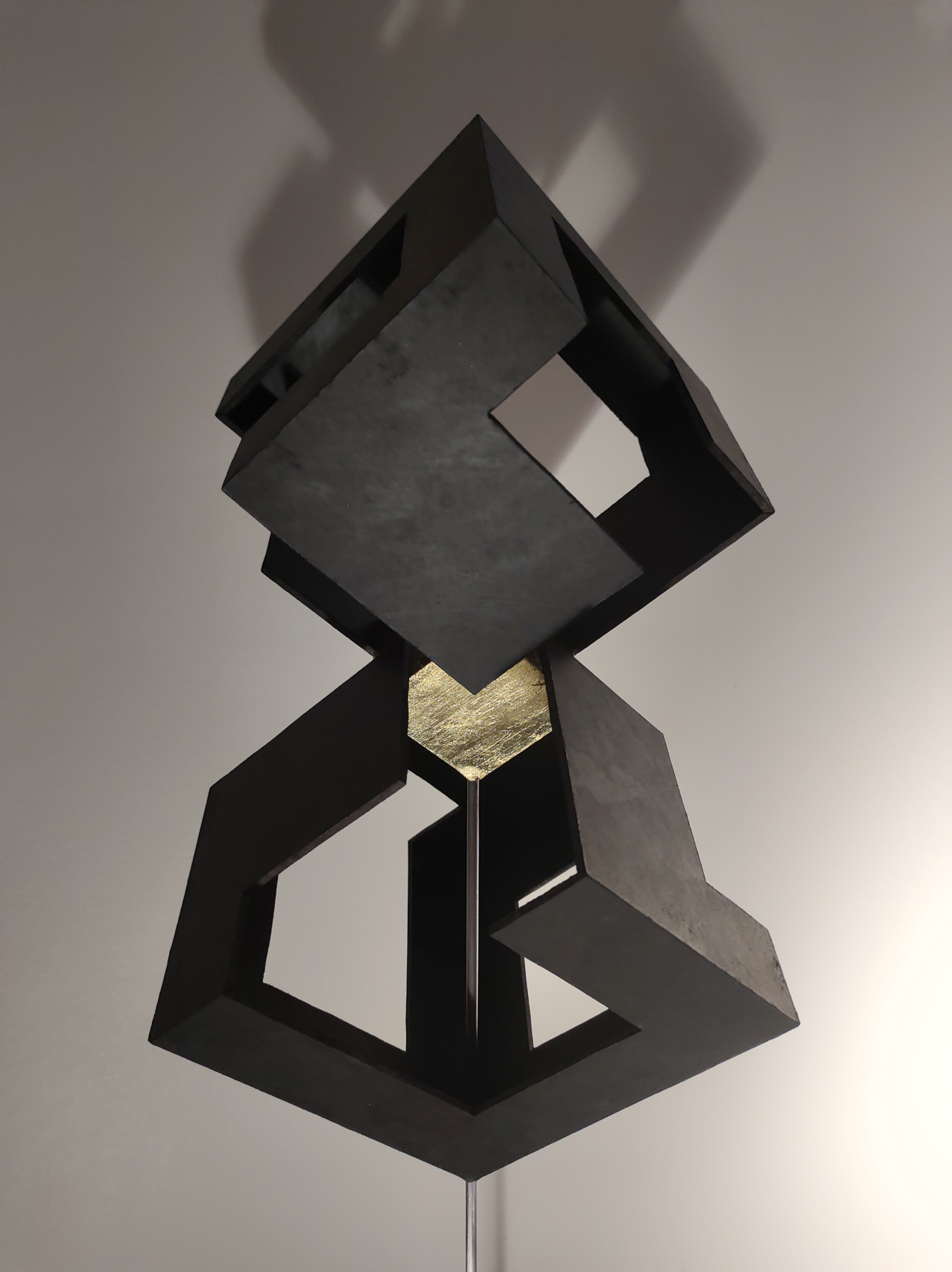
exploded hexahedron tiled with a plane-filling curve
A single line bisects a hollow cube into two mirrored sections.

knot theories ii
A collection of artworks further exploring the use of repeated, simple shapes and lines translated or rotated to create complexity in a knot design.
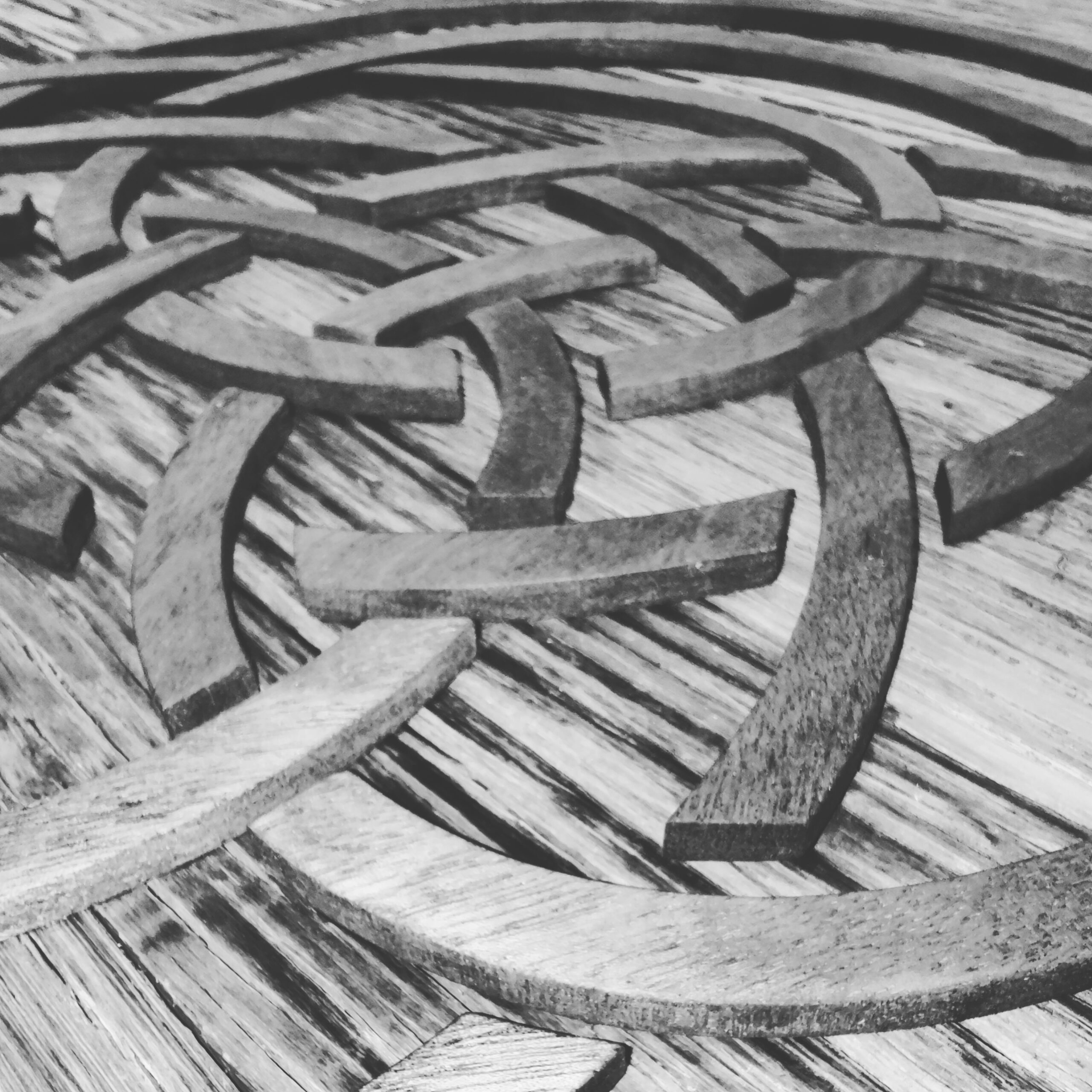
unicursal spiral tercet
Intersecting spirals become one line. The line can be traced from any point back to its origin.
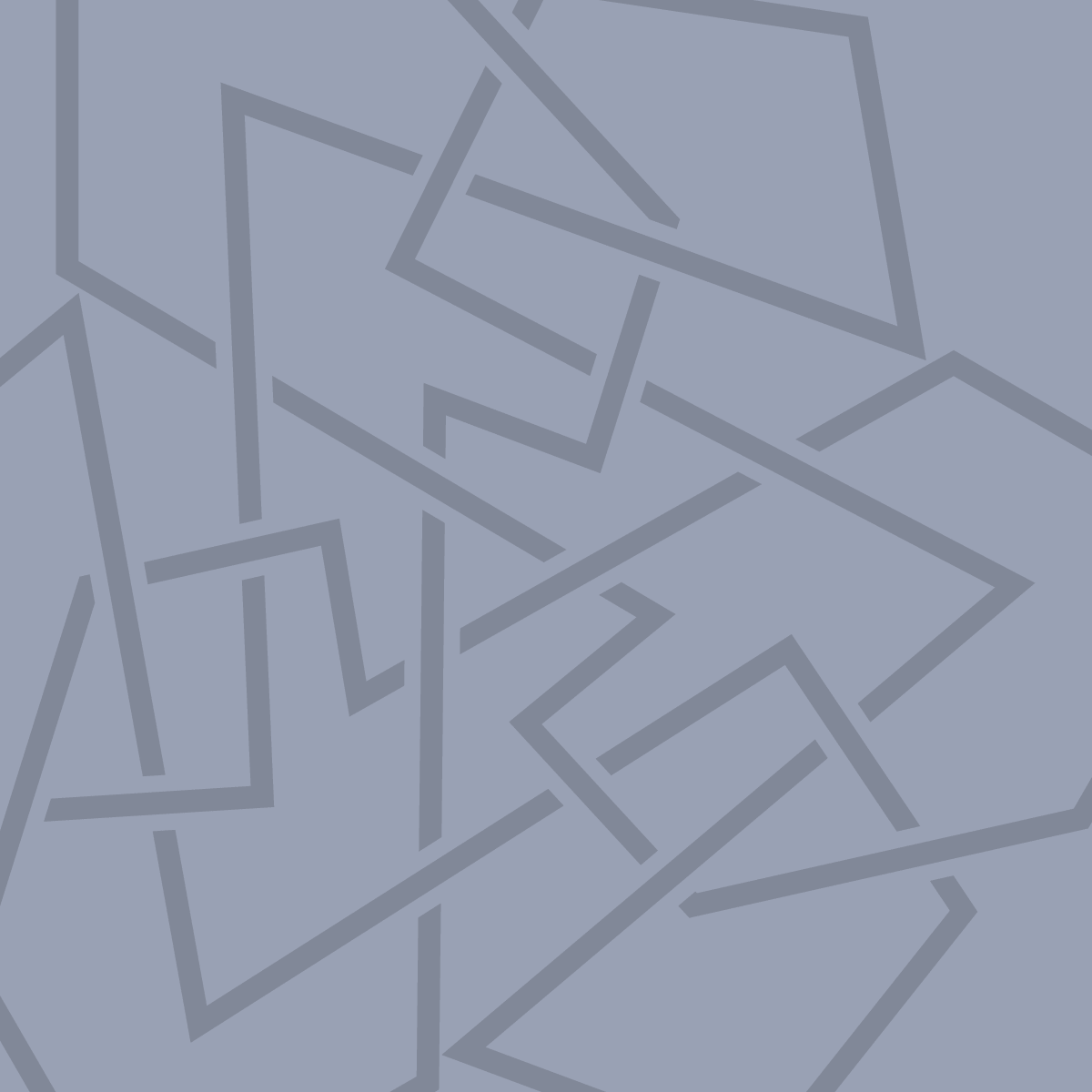
knot theories
Using a formalized system of knot creation, the artwork here represents knots in multiple “in-between” dimensions in three categories, each based on a partial dimension.
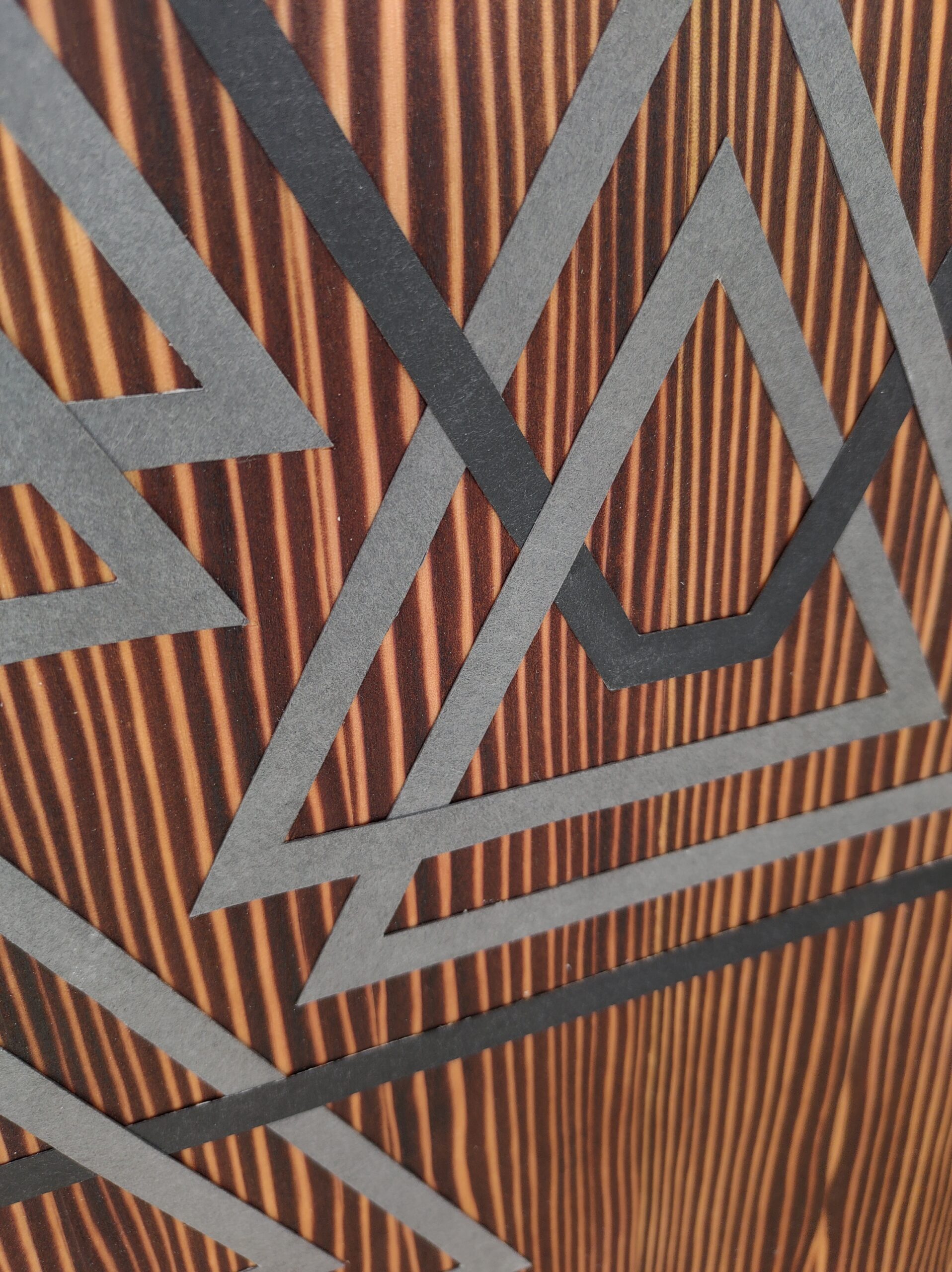
self-intersecting tercet knots with encompassment
Three triangular twists are abound together by an encompassing shape echoing the group’s perimeter. The way the paper is cut and overlapped gives the illusion that each of the four main components are made of single pieces of paper. You have to cheat a little to give the illusion of self-intersecting lines made out of a…
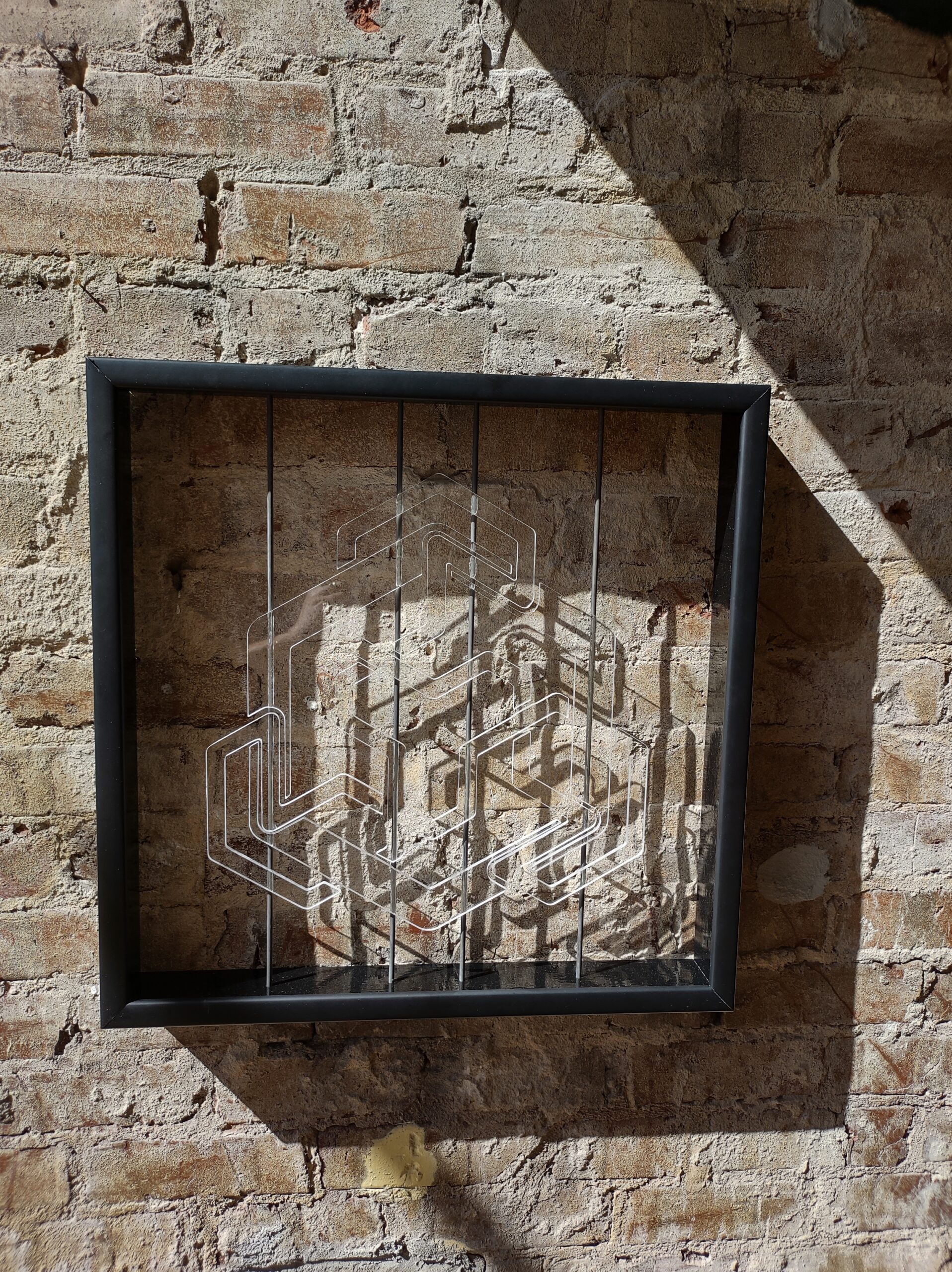
encompassed unicursal tercet knot
A hexagonal ring bound to another triply-twisted ring is suspended vertically.

projected isometric tercet knot
This is a double-lined, triple-component knot based on an isometric grid. The rules of knot making are slightly bent with the double line, but half the fun of making your own system is breaking its rules. It is “projected” is because its construction uses small wooden dowels to lift the individual pieces above the surface.…
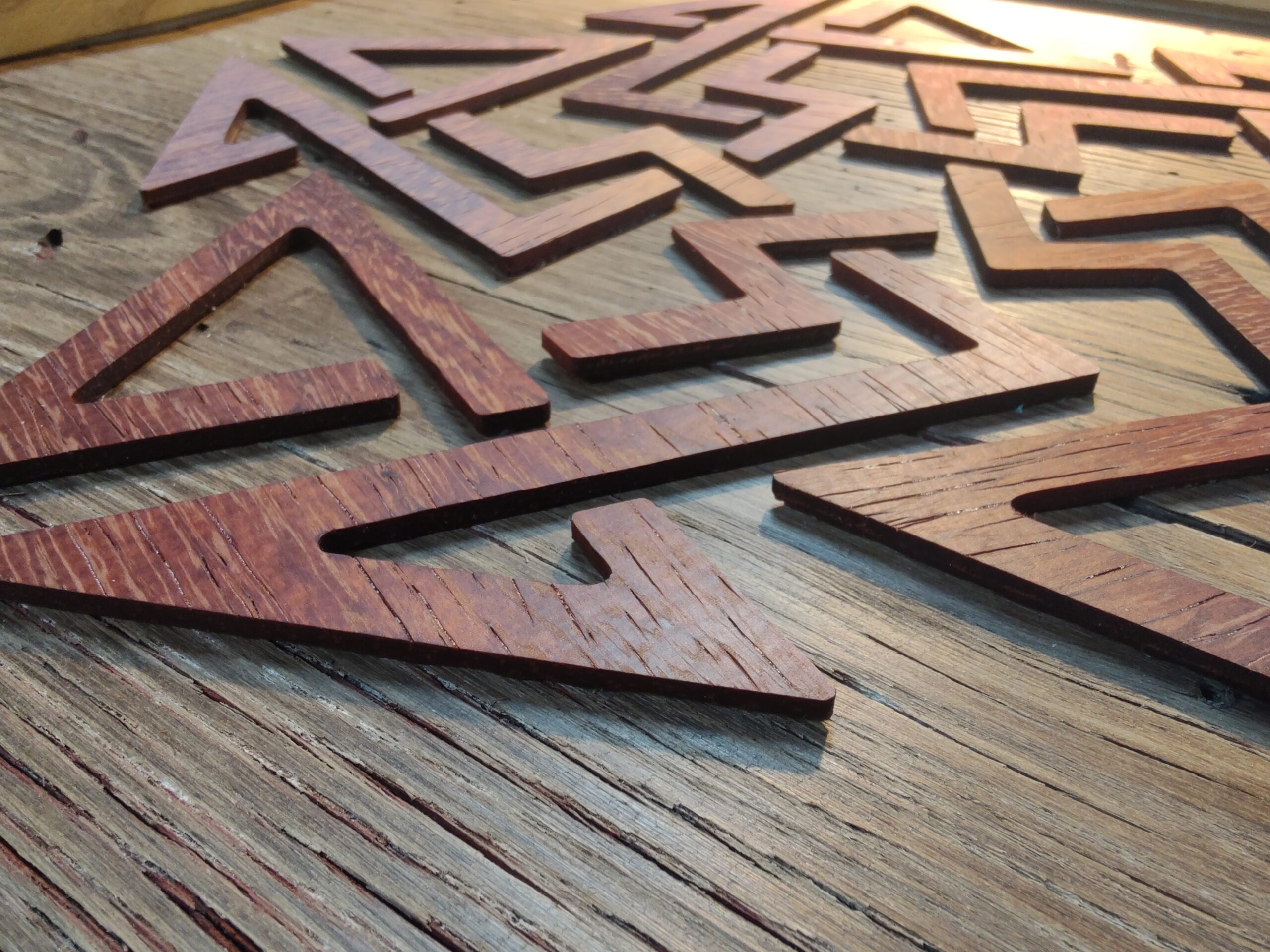
unicursal pentad knot
Follow the (implied) line with your eye. The line is unicursal, meaning there’s only one line. At first you might be tempted to assume there are five sections, and of course there are, but the radial symmetry is just a property of this particular line. These are probably the most difficult knots to design because…
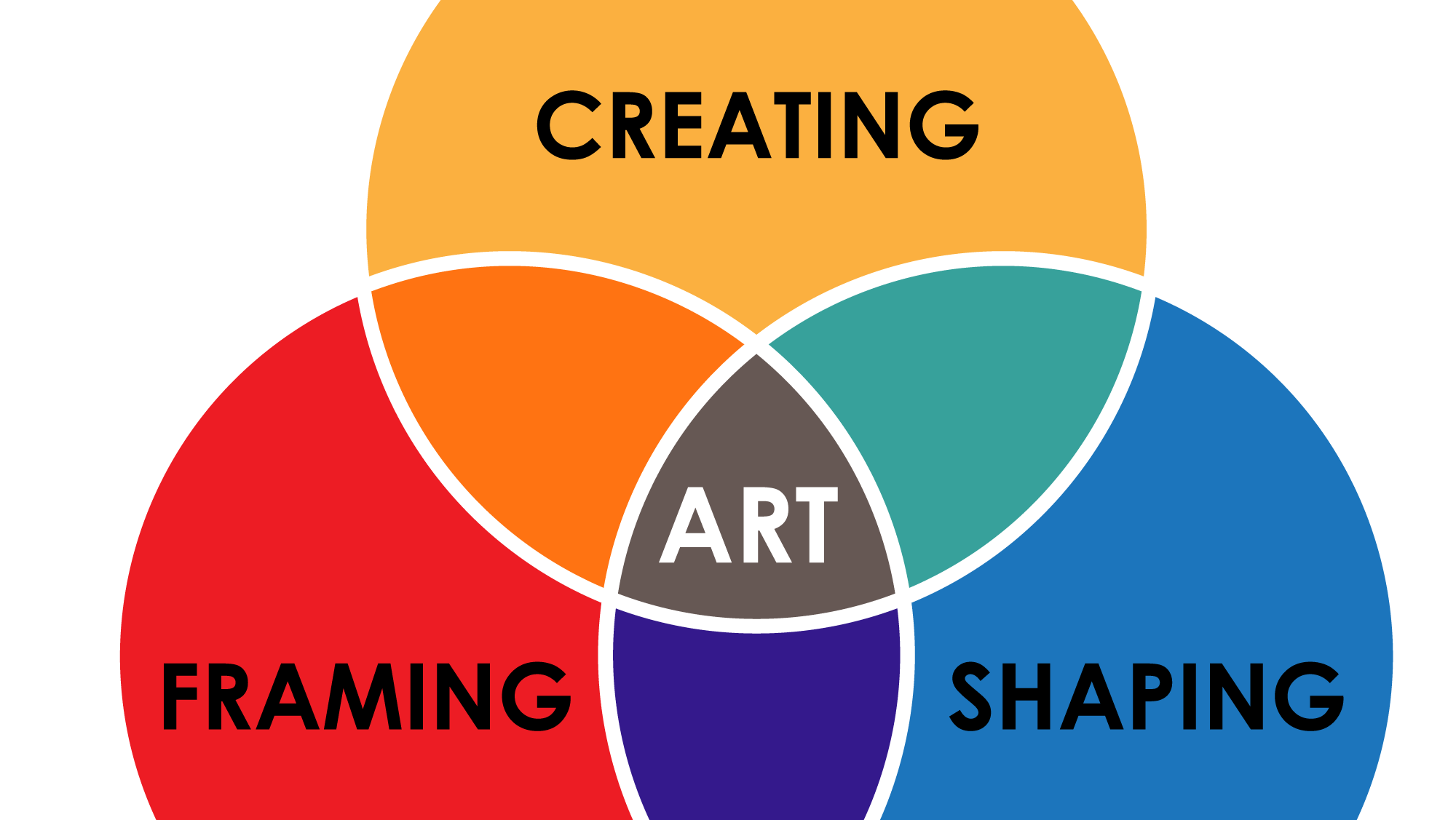
current definition of art
components of an artwork A work of art has been fully realized when an artist actively participates in the actions of creating, shaping, and framing. When only one or two actions have been done, this only means that the artwork is not as fully realized as it could be. creating Since ideas can exist independently of…
time-based HSB color values
My interest in time-based color values came from reading about the concept of chromo°. Picking a point from the HSB color model proved more complicated than I originally thought. Ben Bryant helped me do the hard math parts to figure this one out, so special thanks to him. See the Pen time-based HSB by adam…
my name
Below are real life implementations of a logotype of my first name. The first version of this was created when I was in middle school, c.1990. After taking art more seriously, or at least doing more art, I have been in search of a symbol or mark which represents me. I returned to a version…
roman alphabet observation
I wanted to call this my roman type theory, but it’s just more of an observation of an interesting pattern. Maybe after you read this, you’ll look at the alphabet differently, especially if you’re looking at the alphabet with something obstructing your view of most of it…. What I mean here by the roman alphabet…



